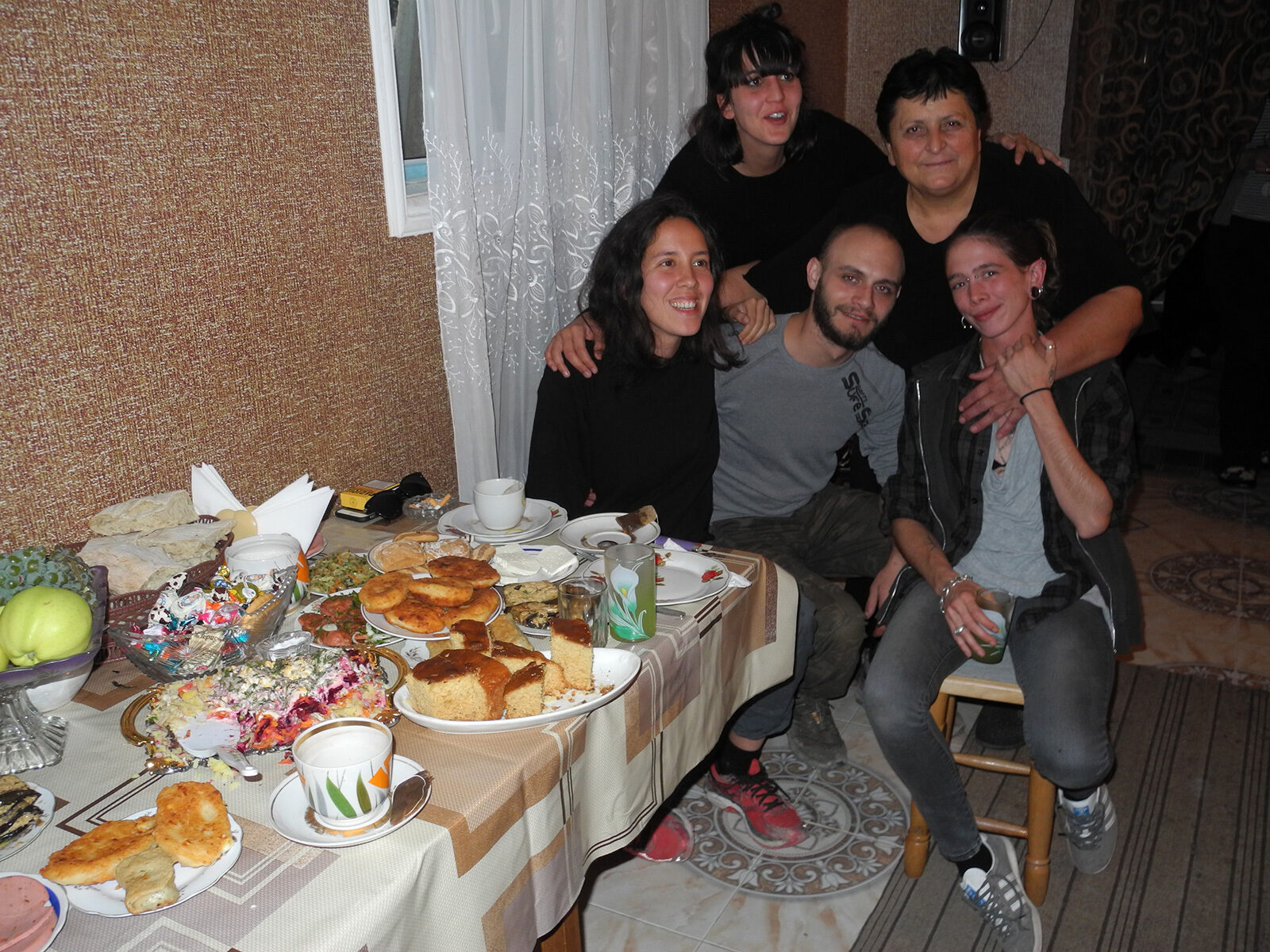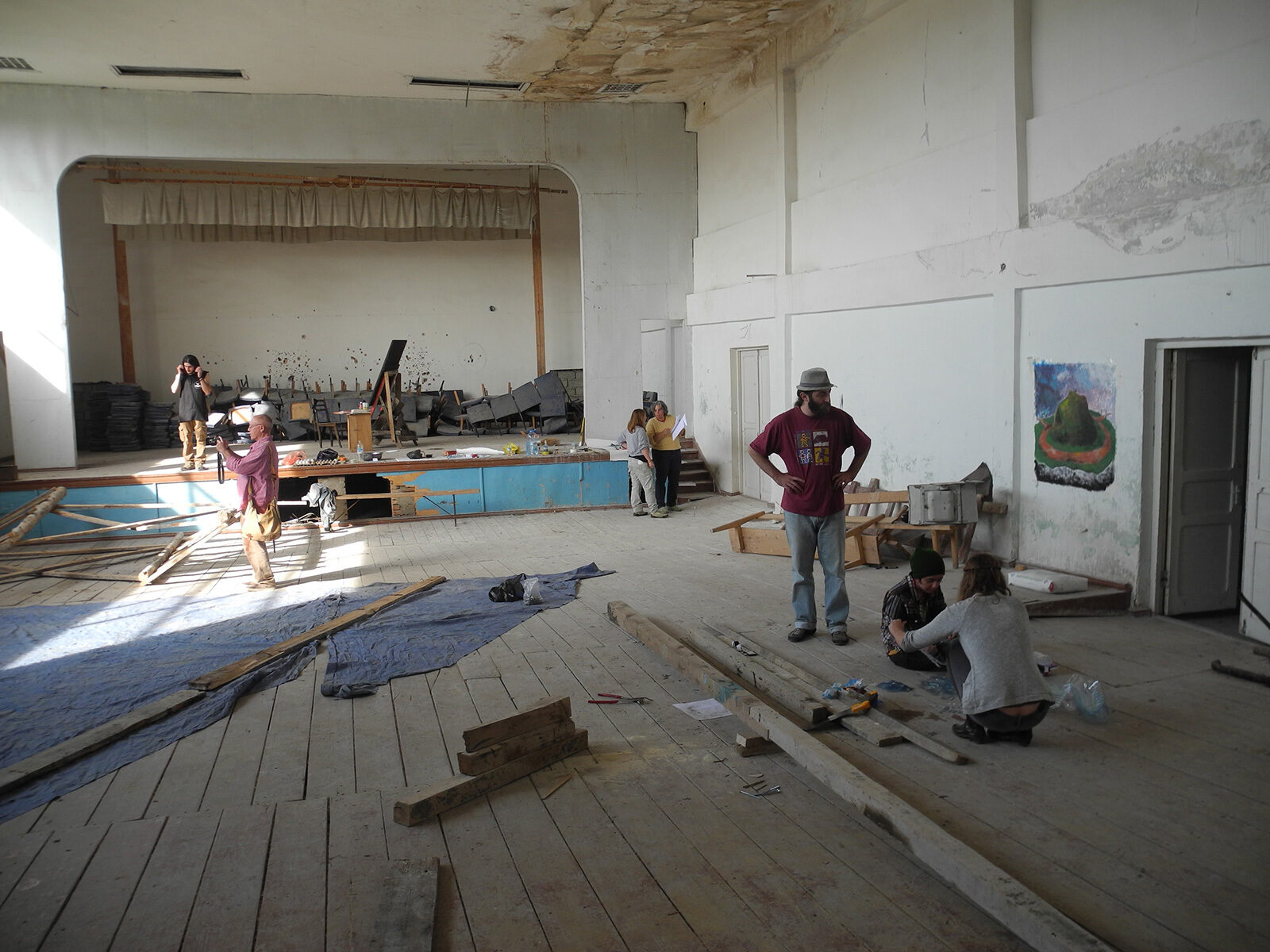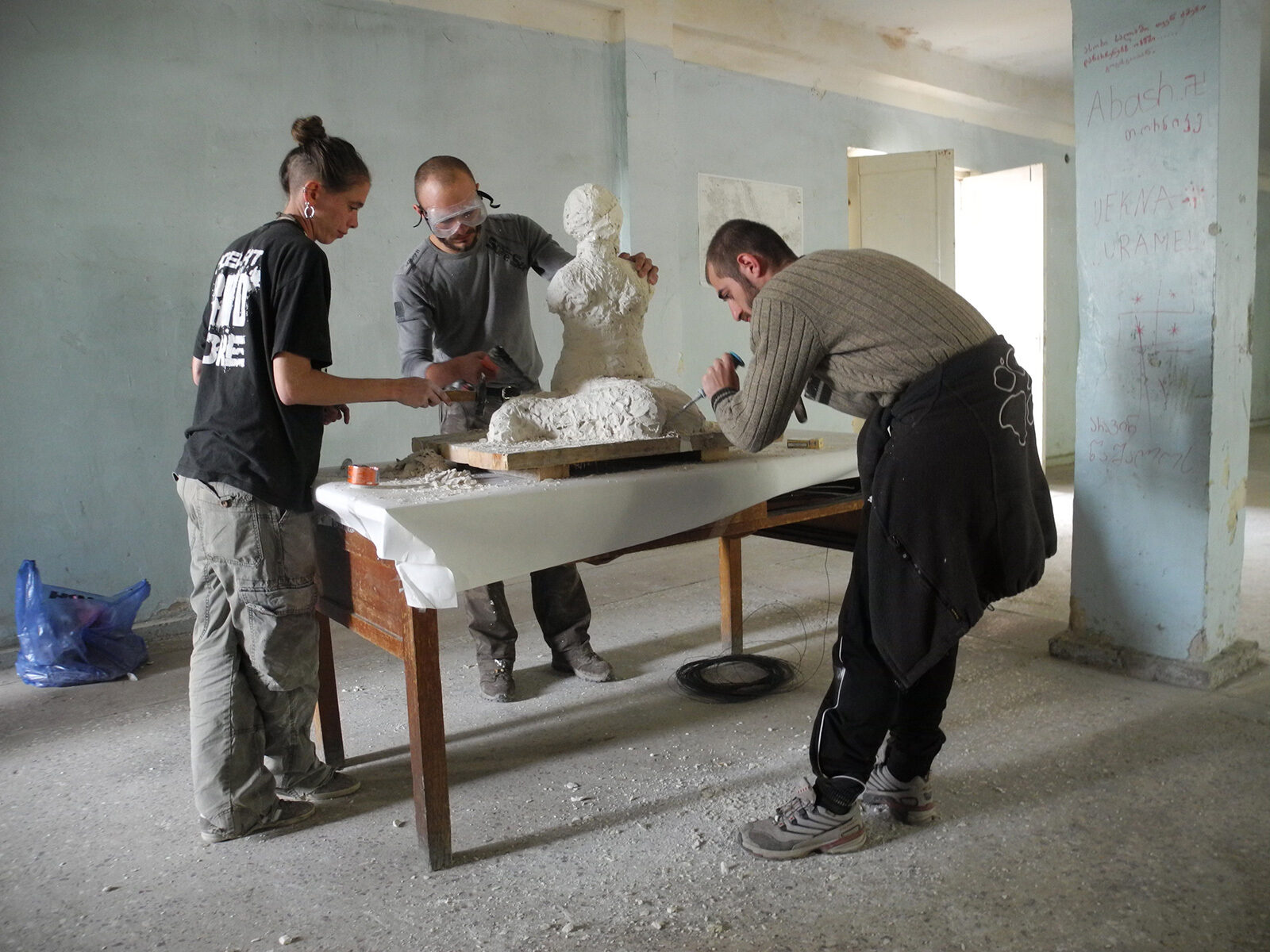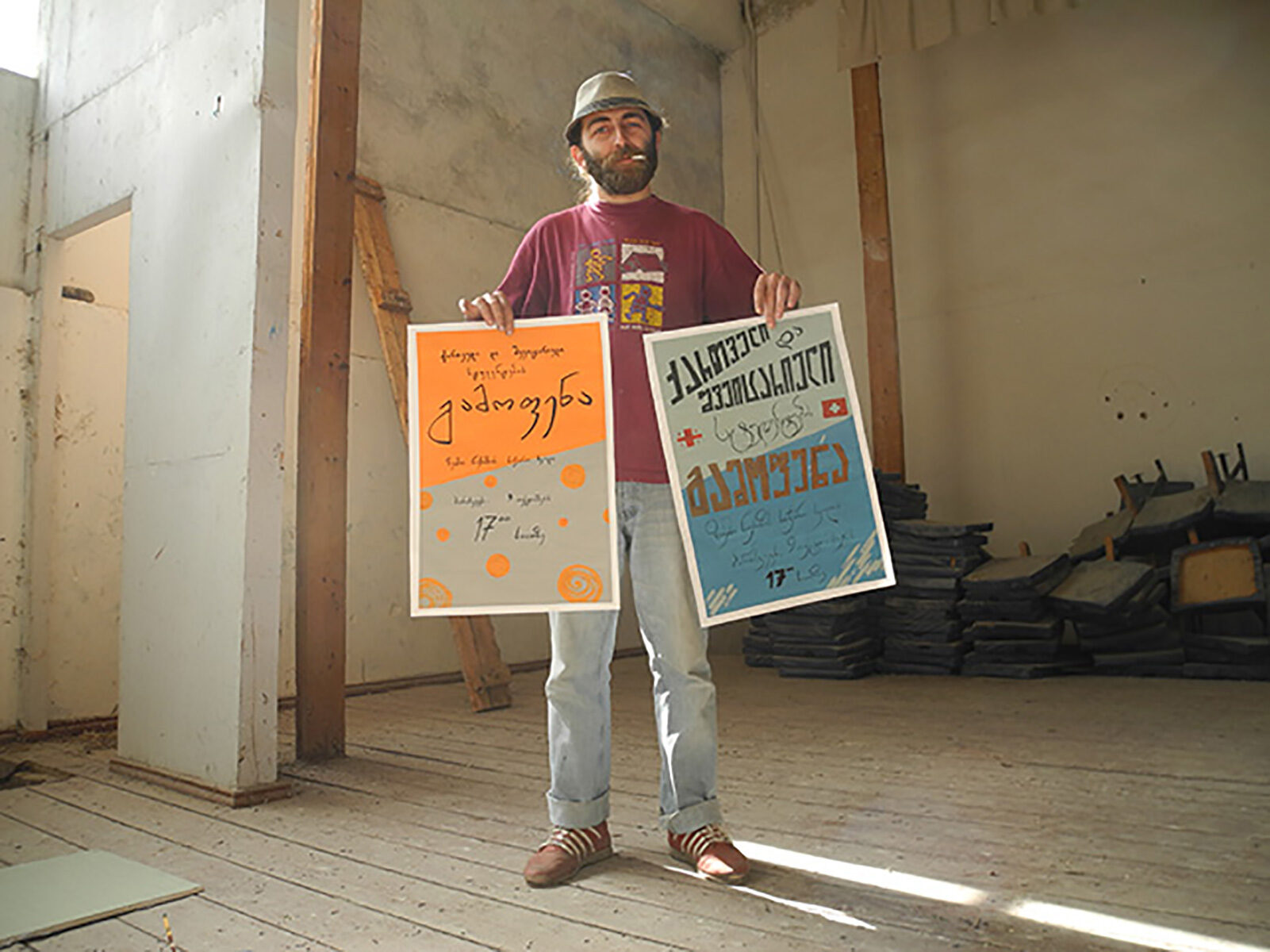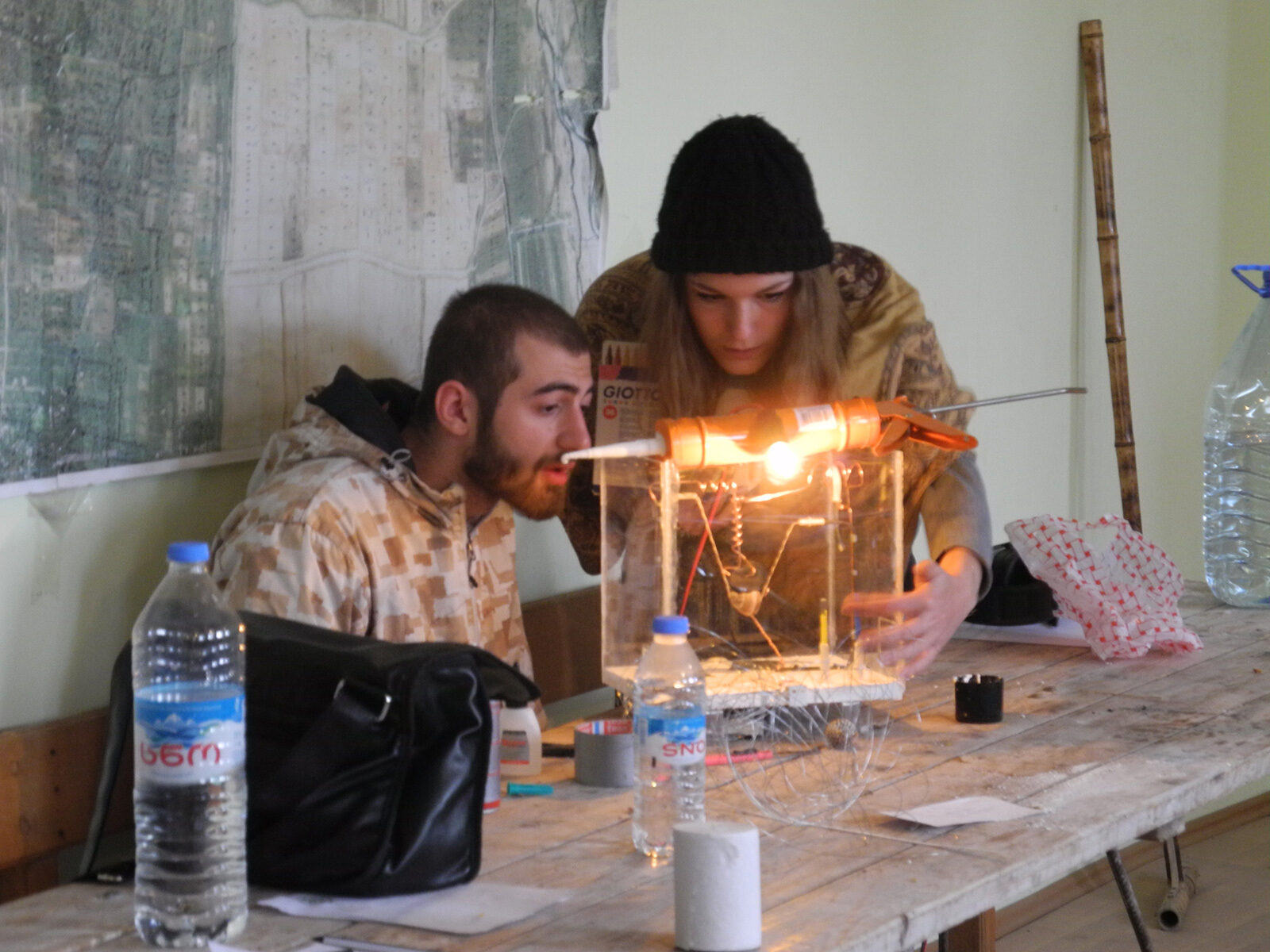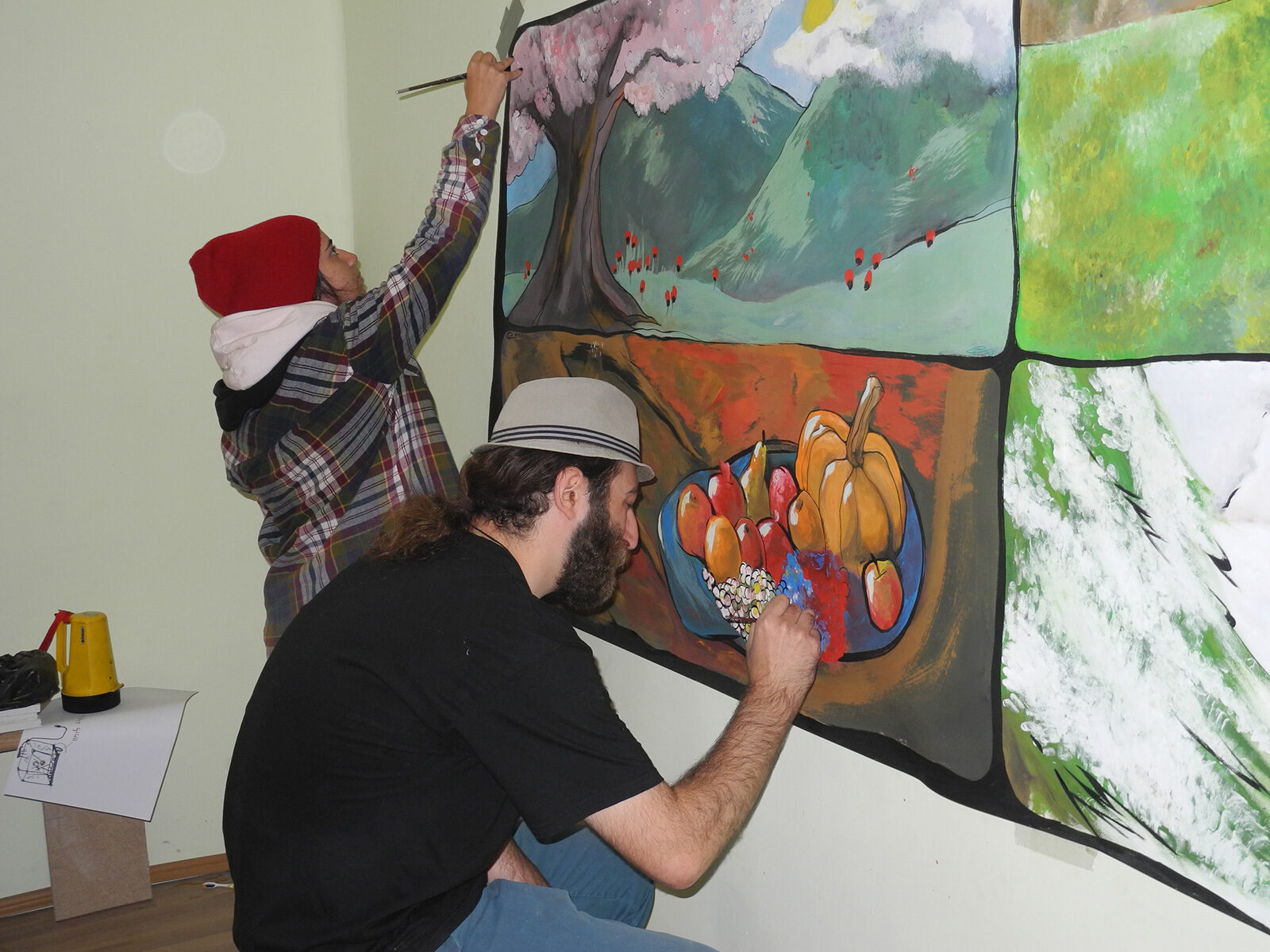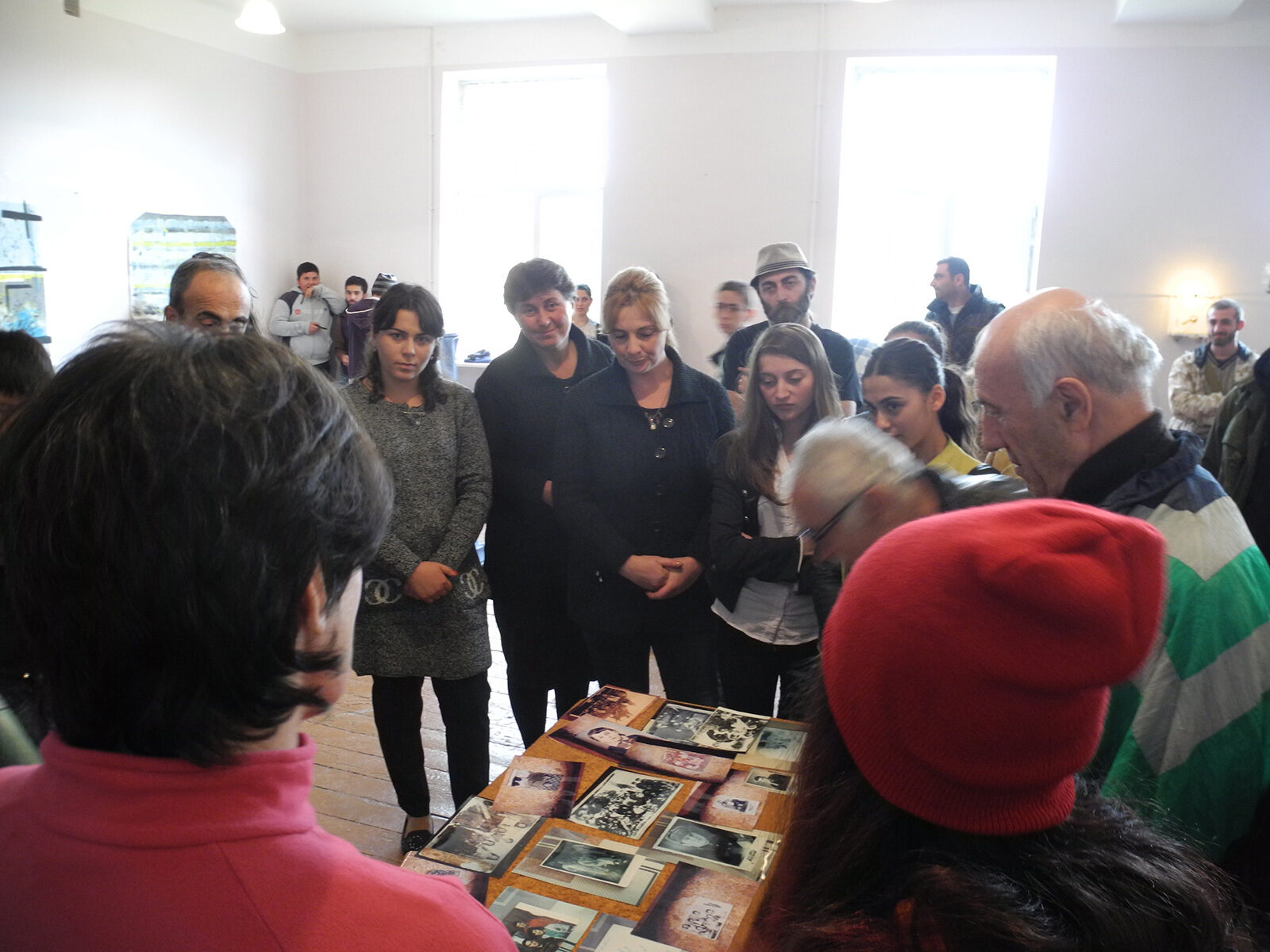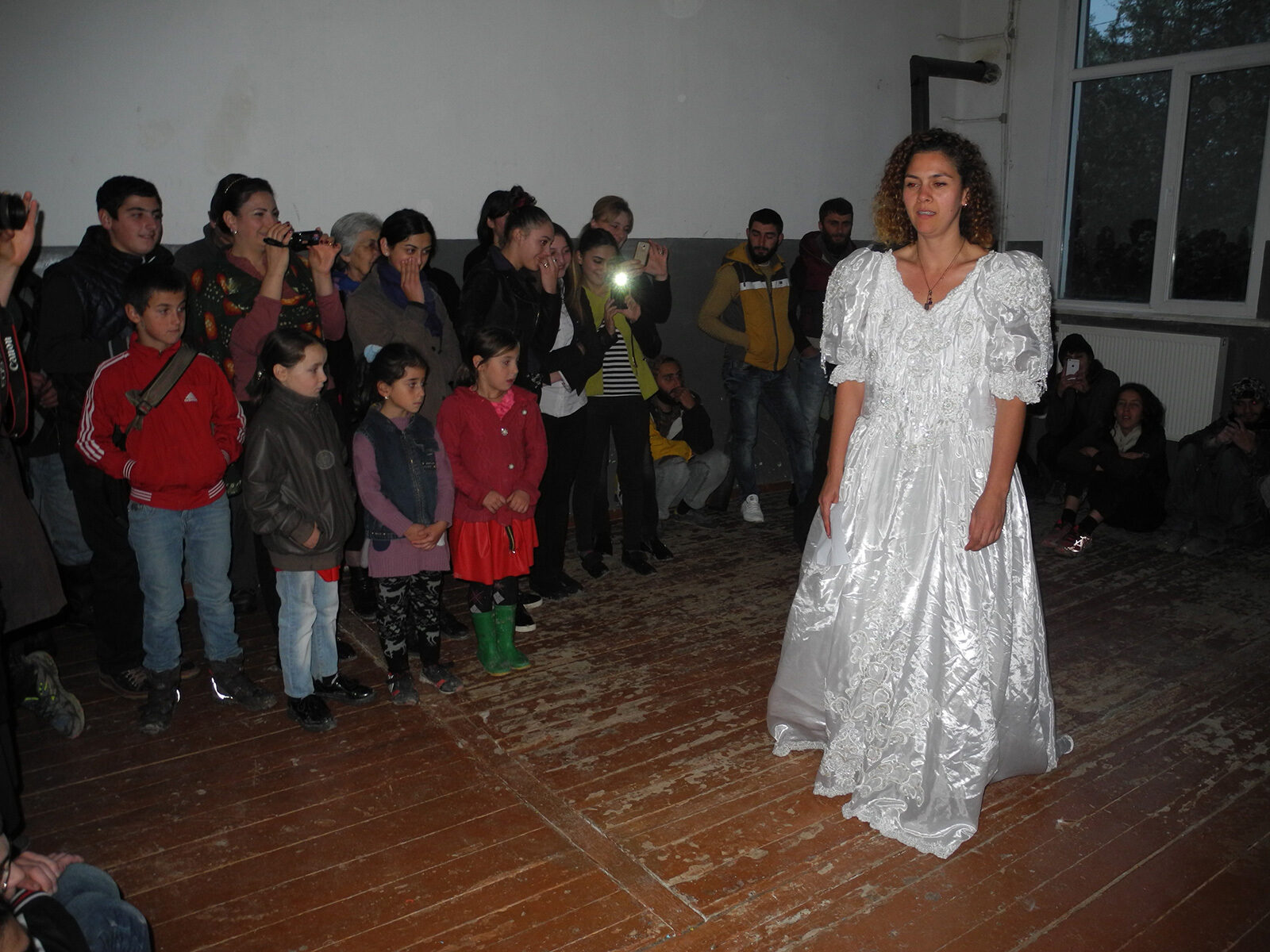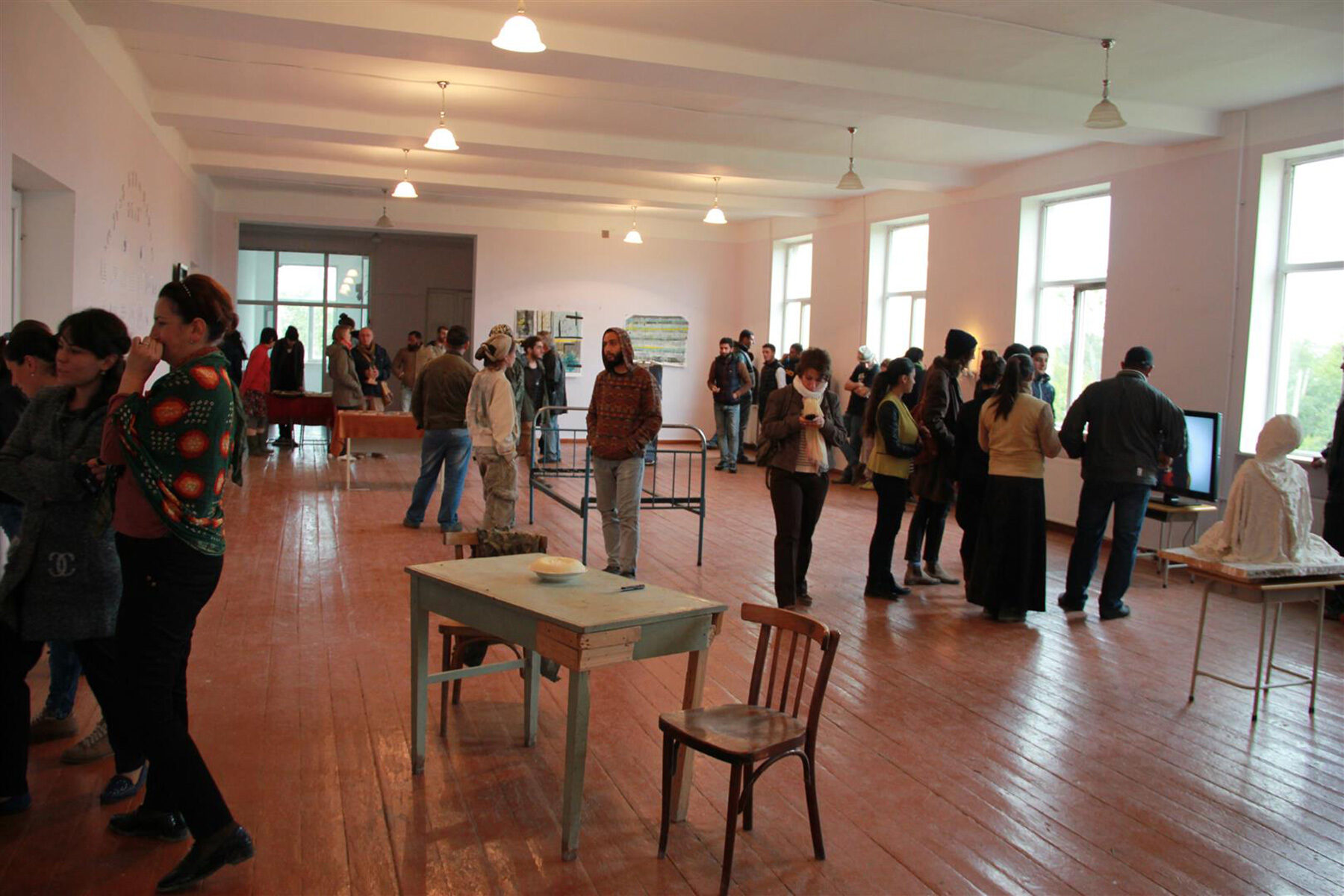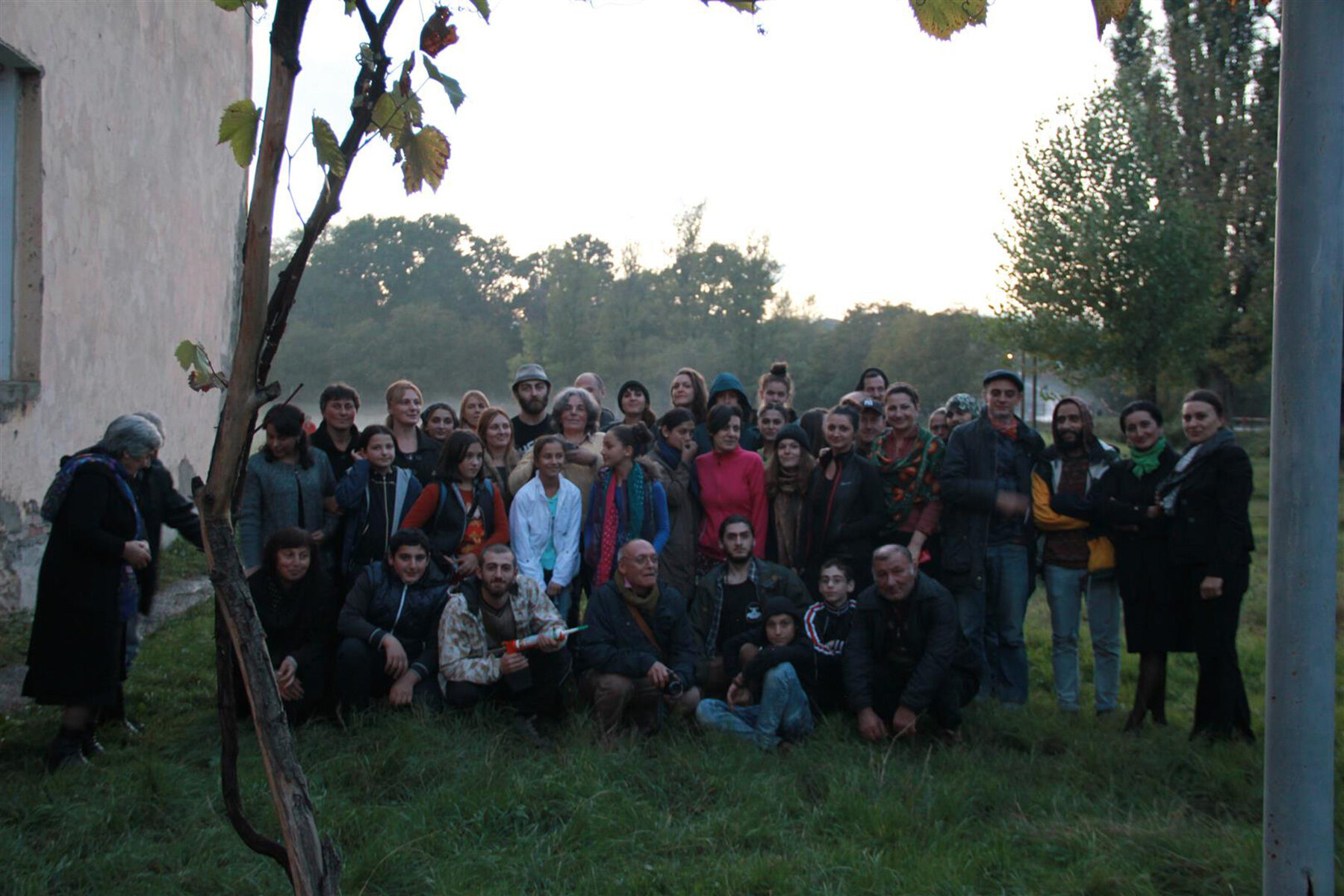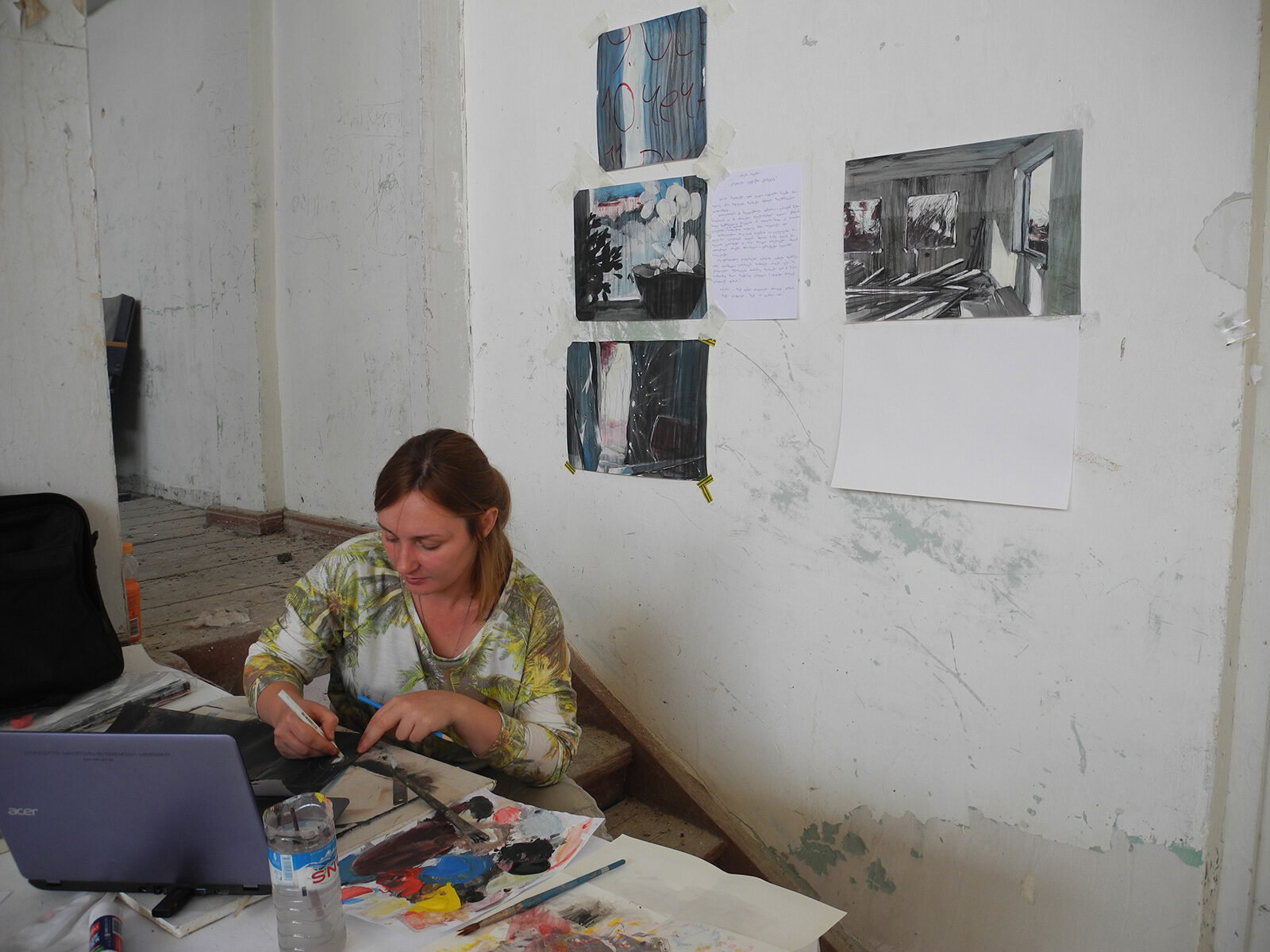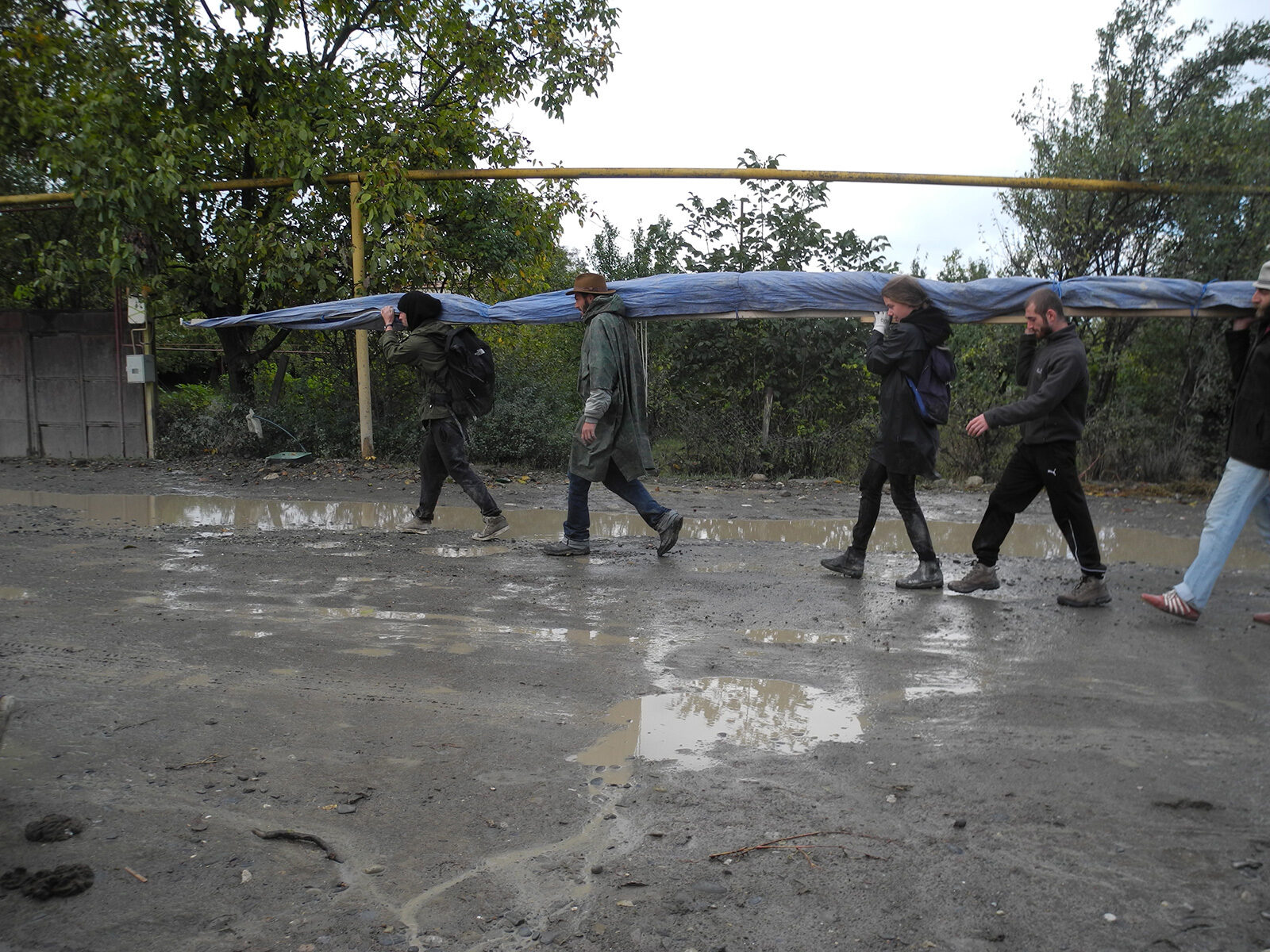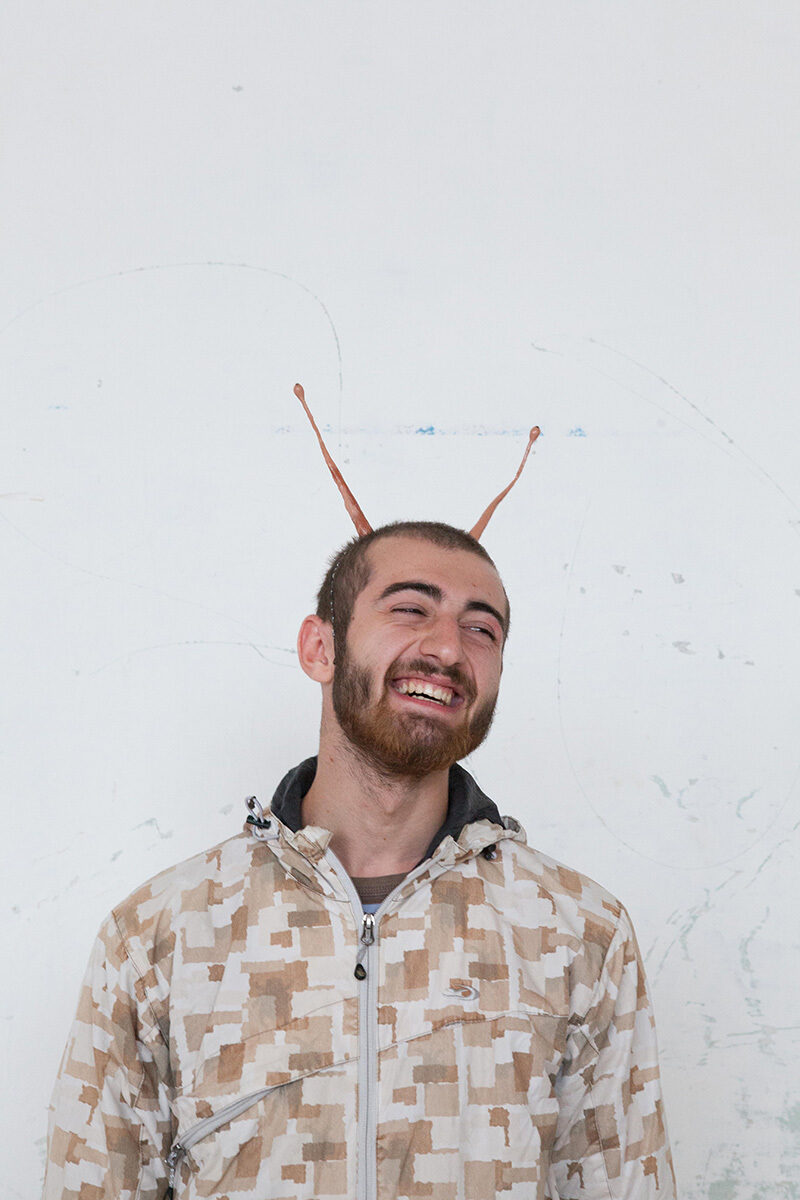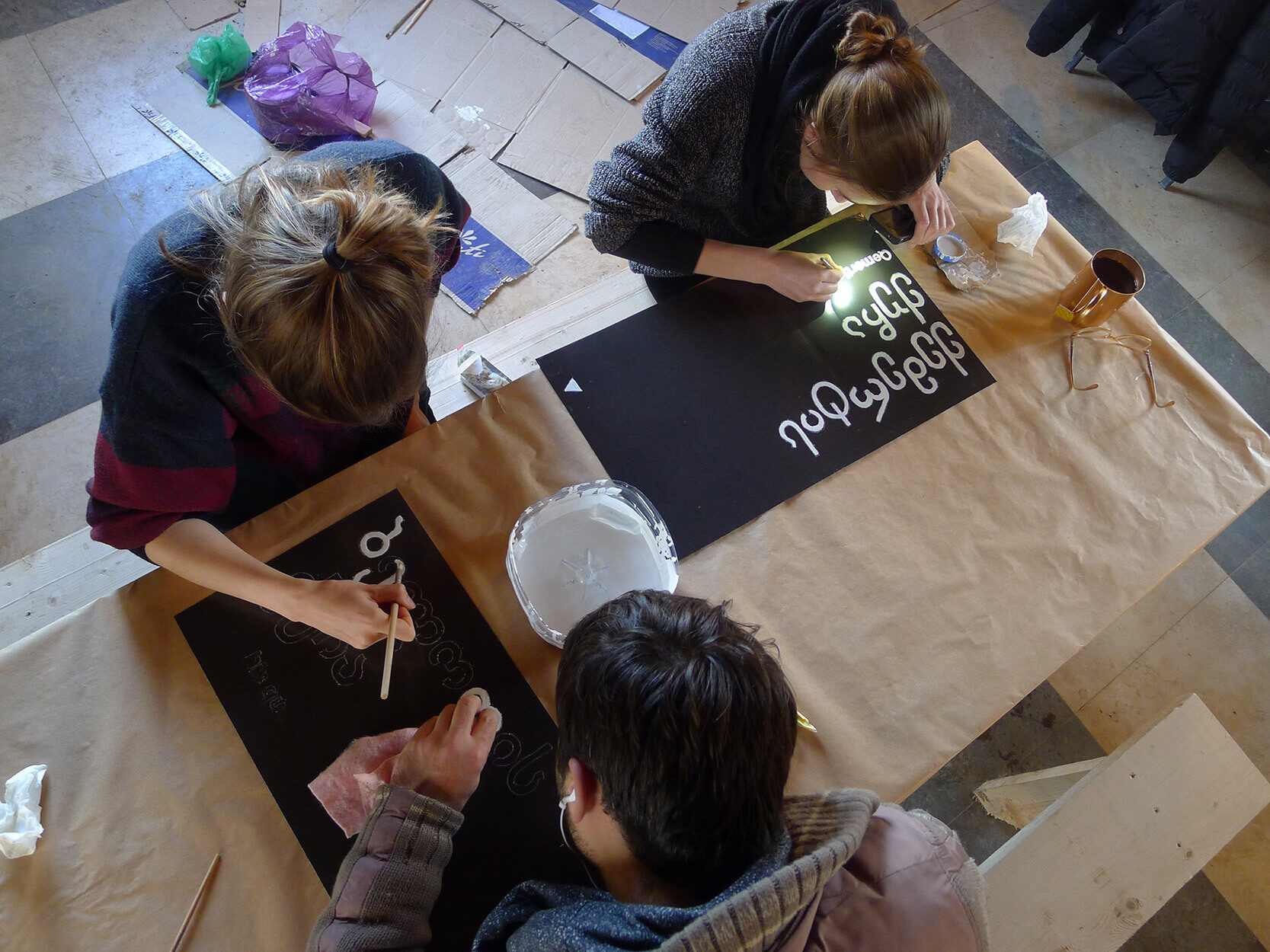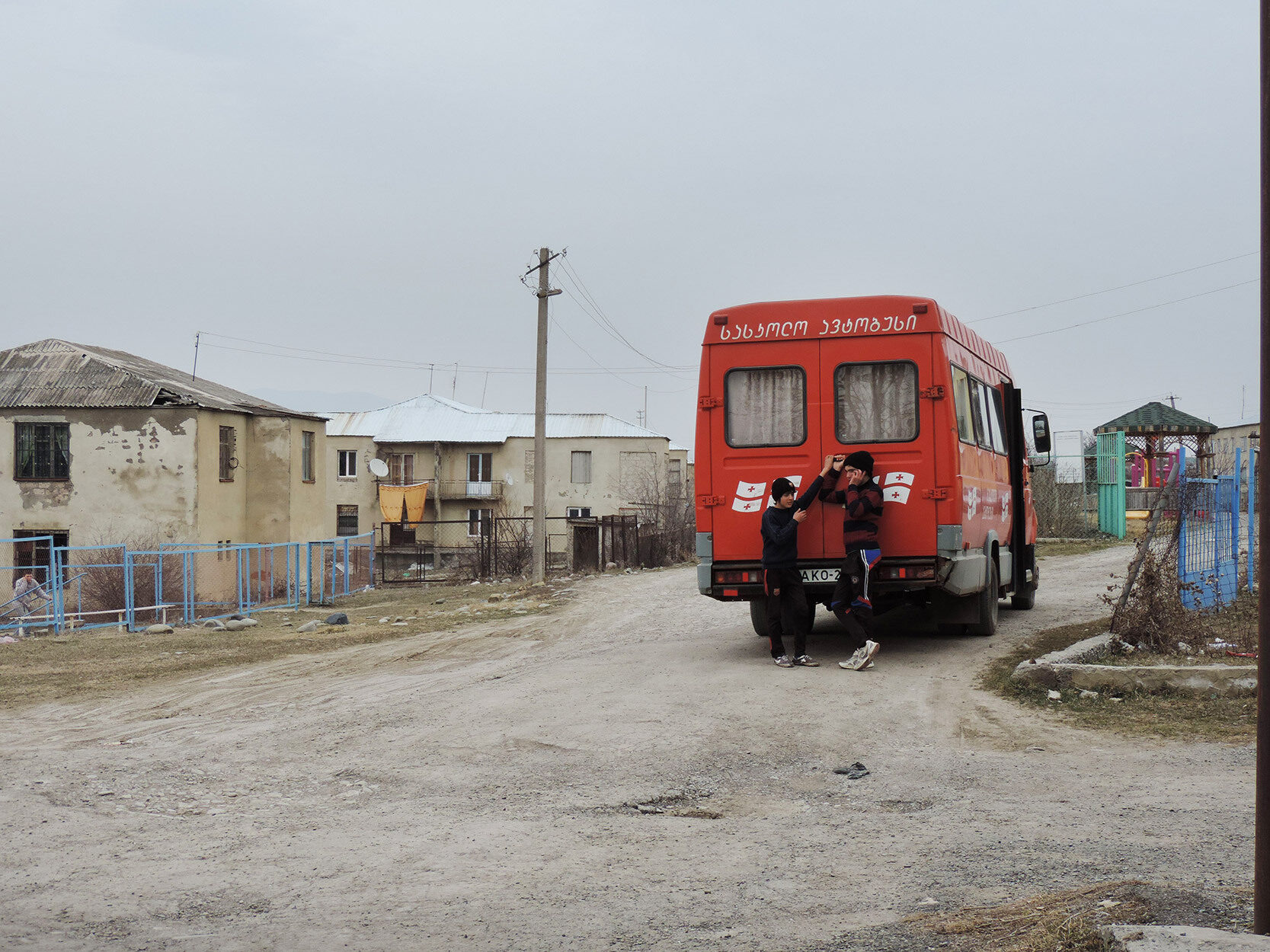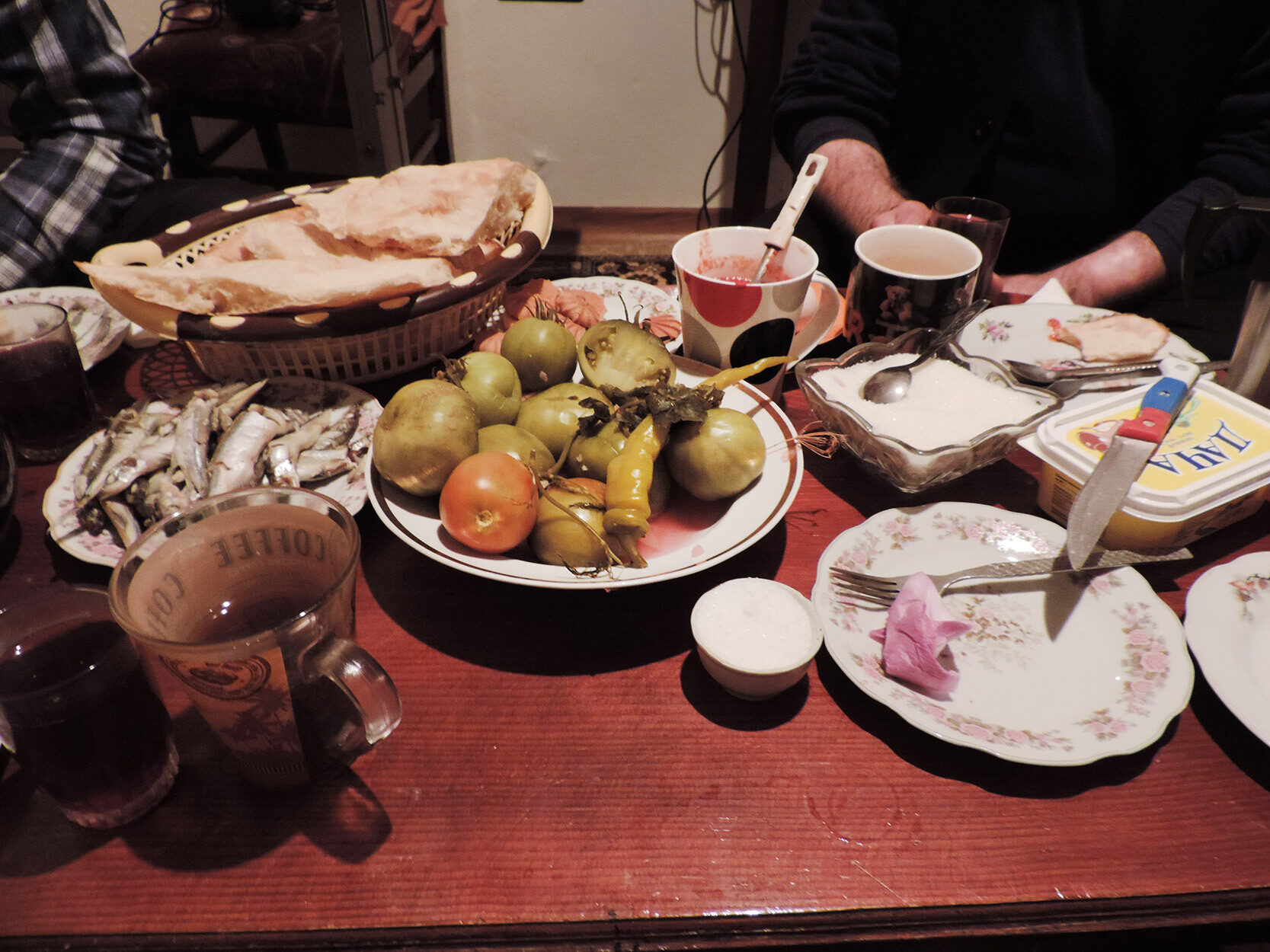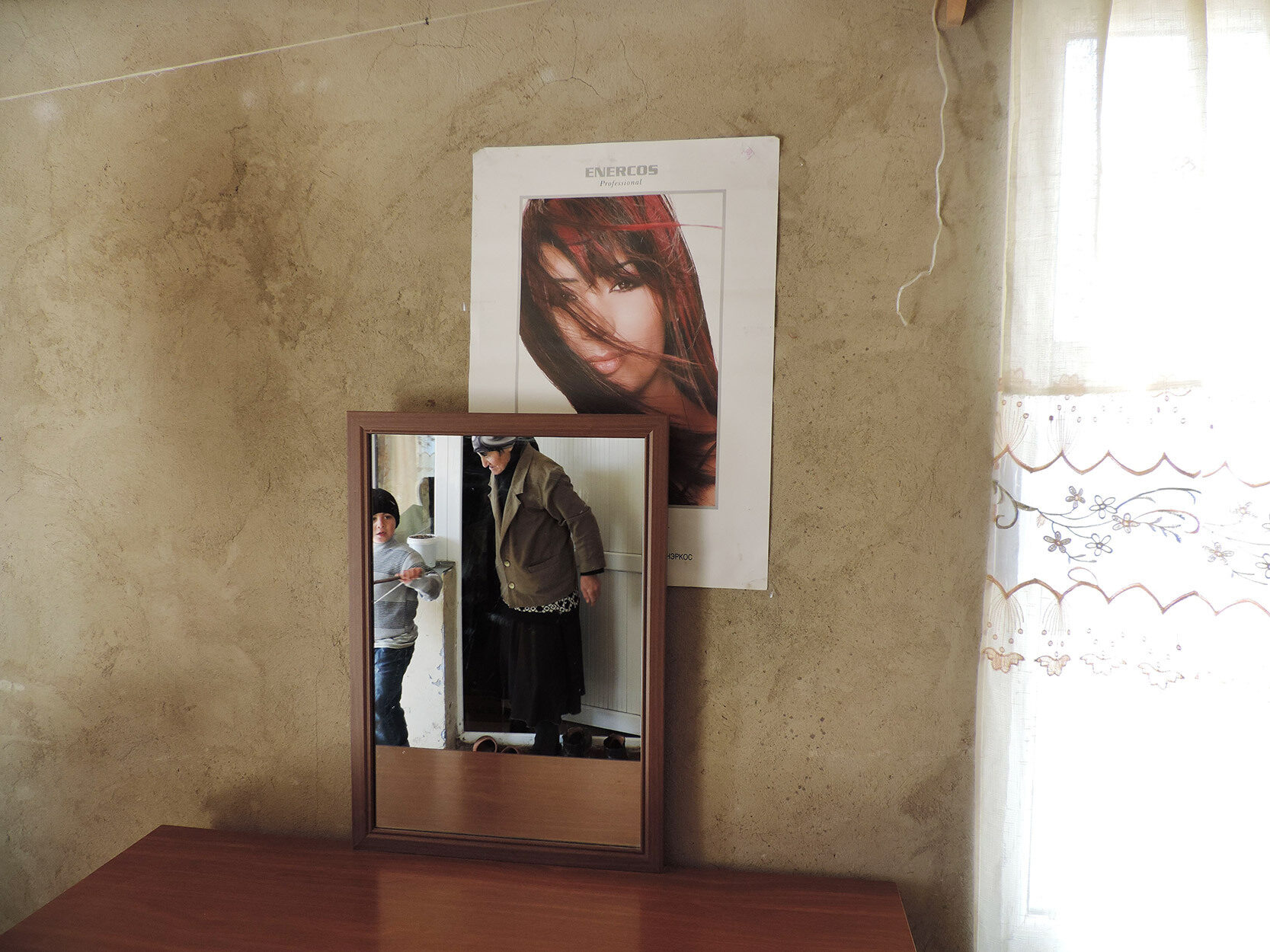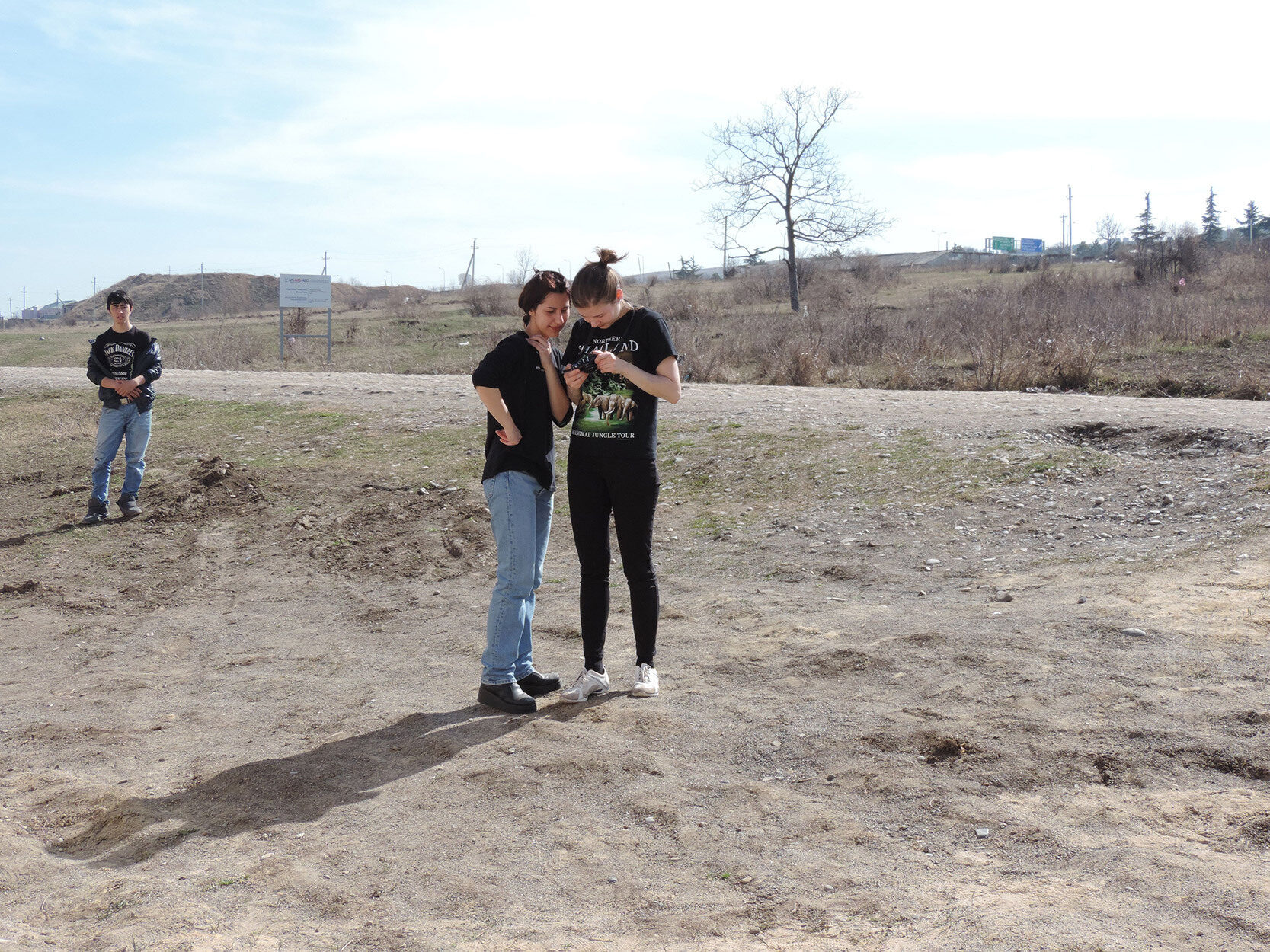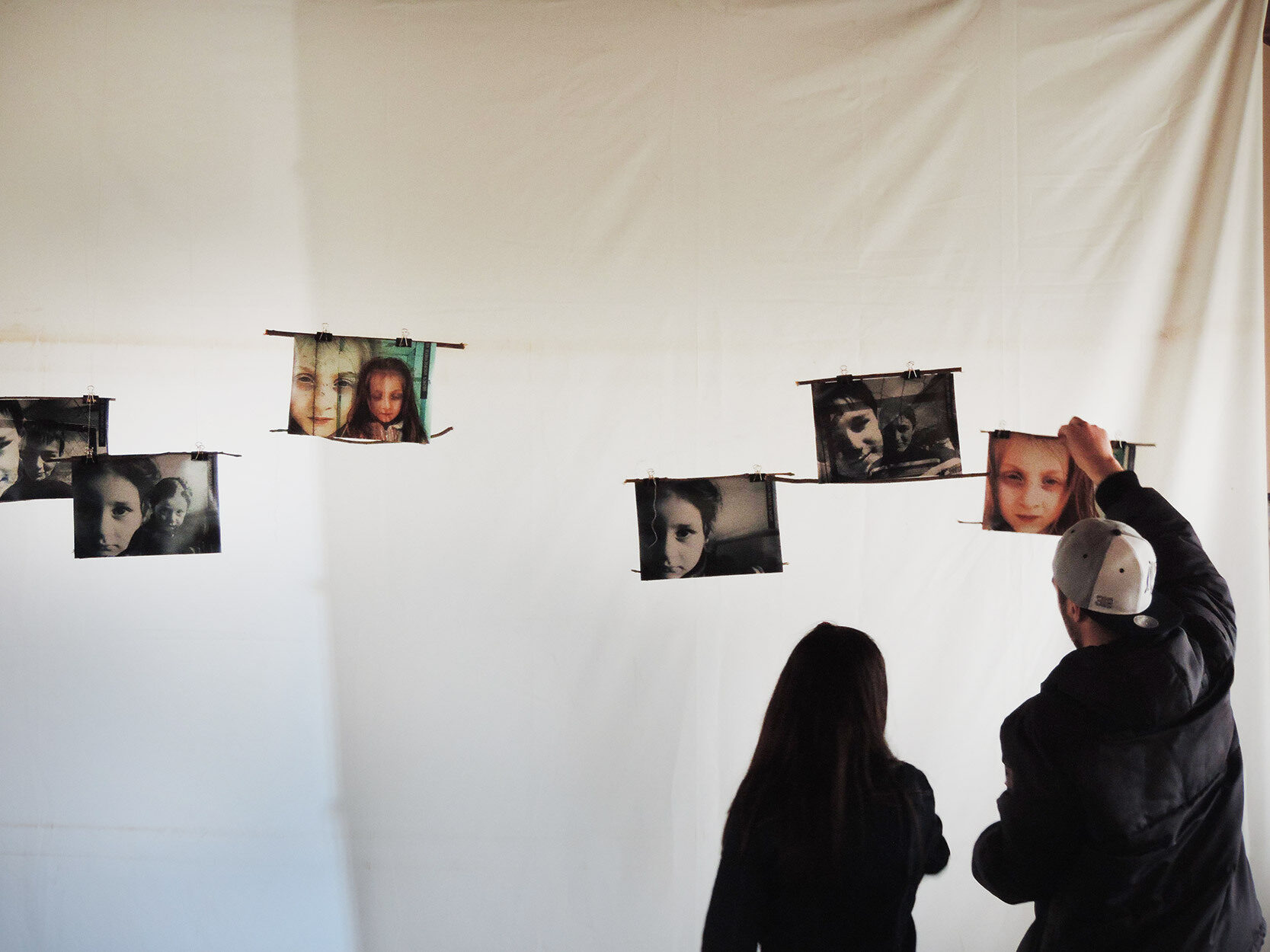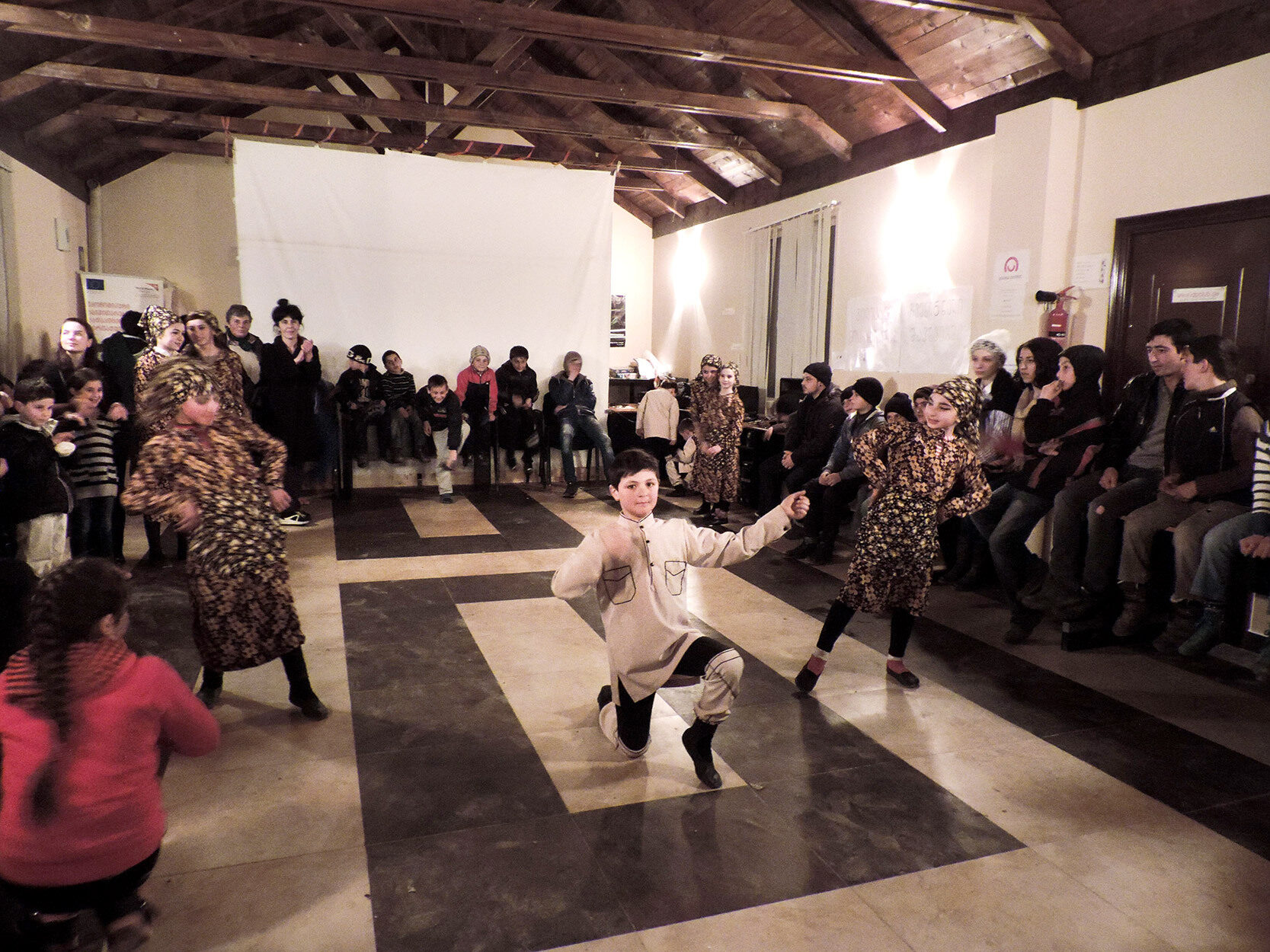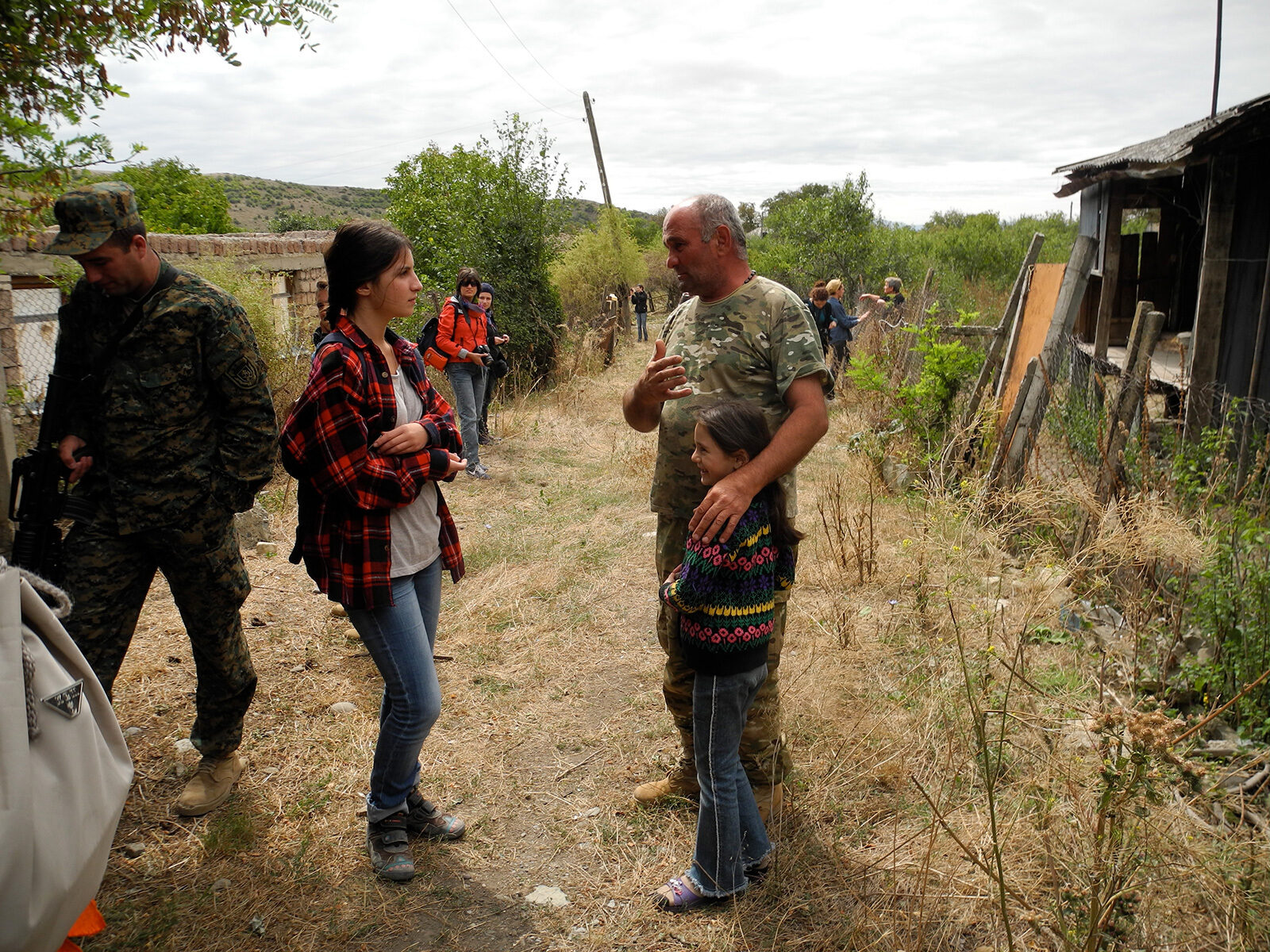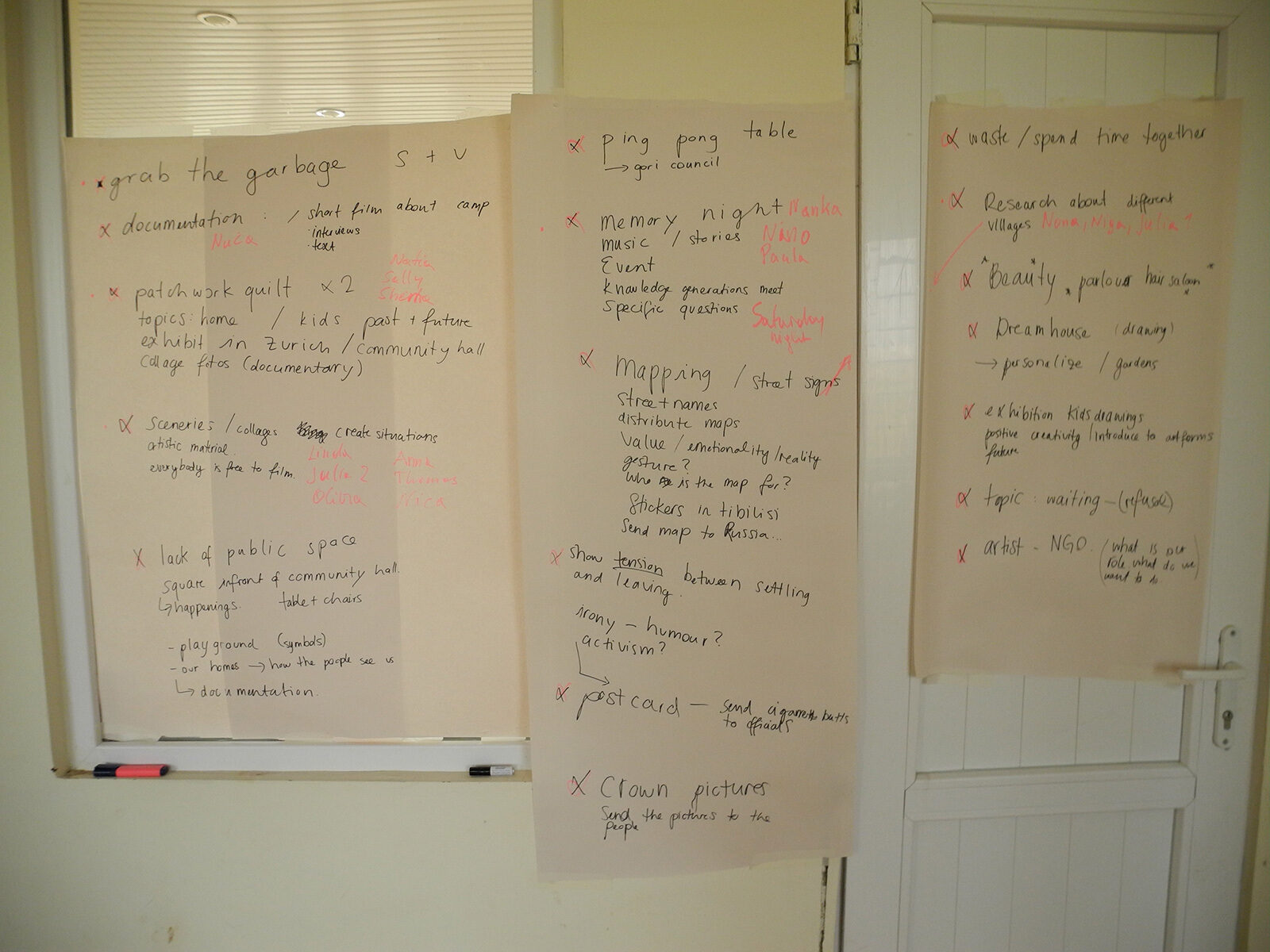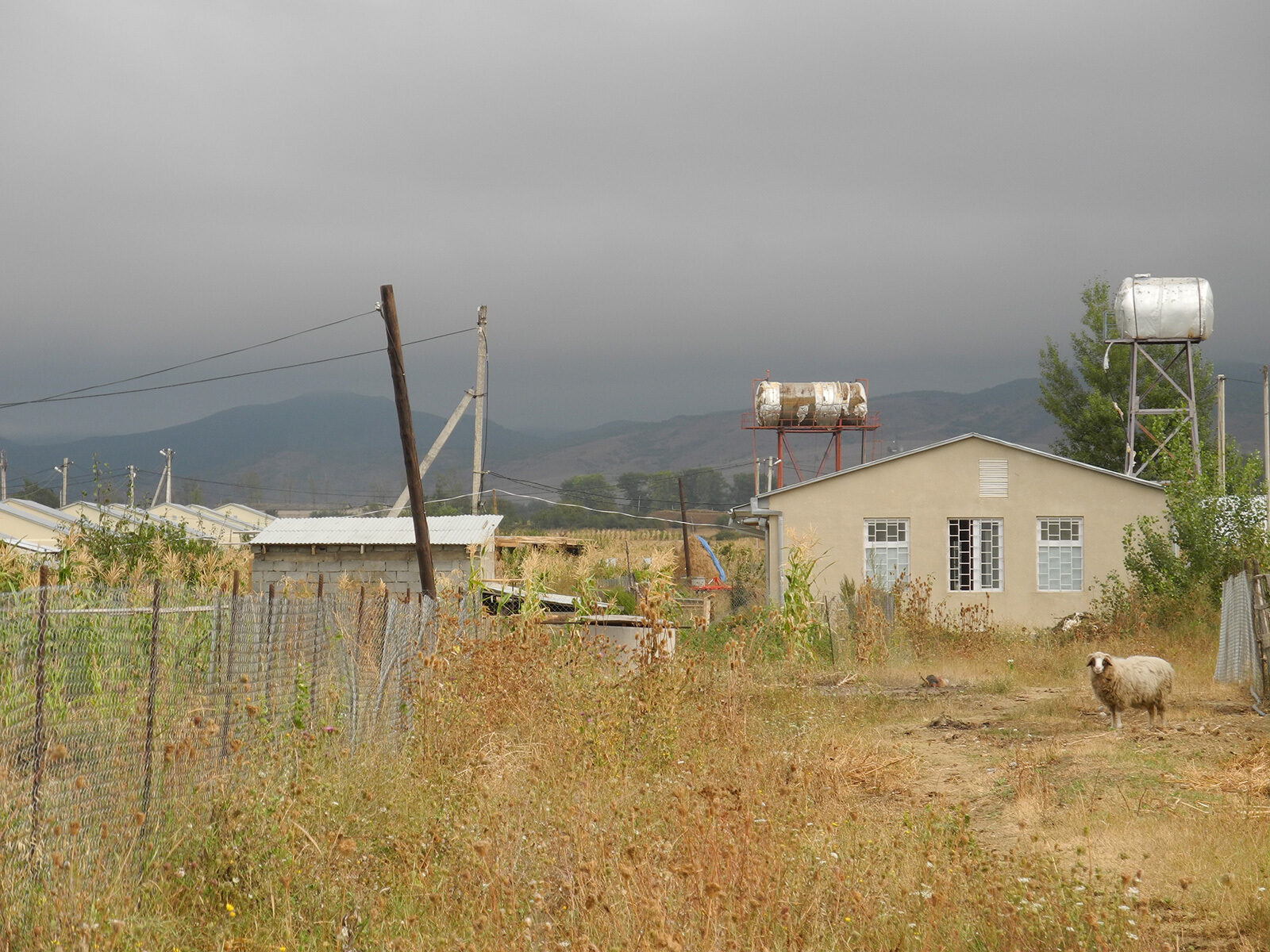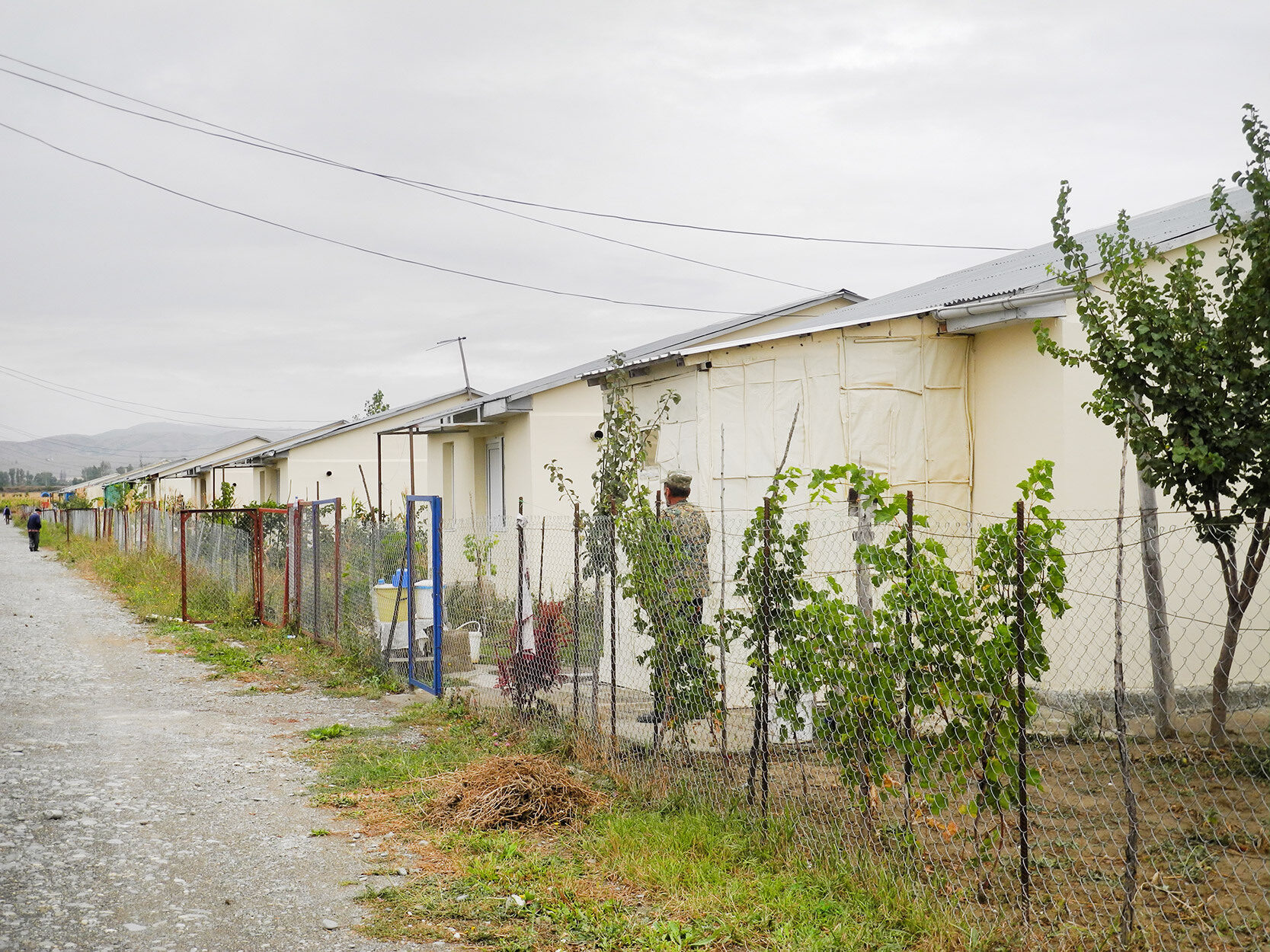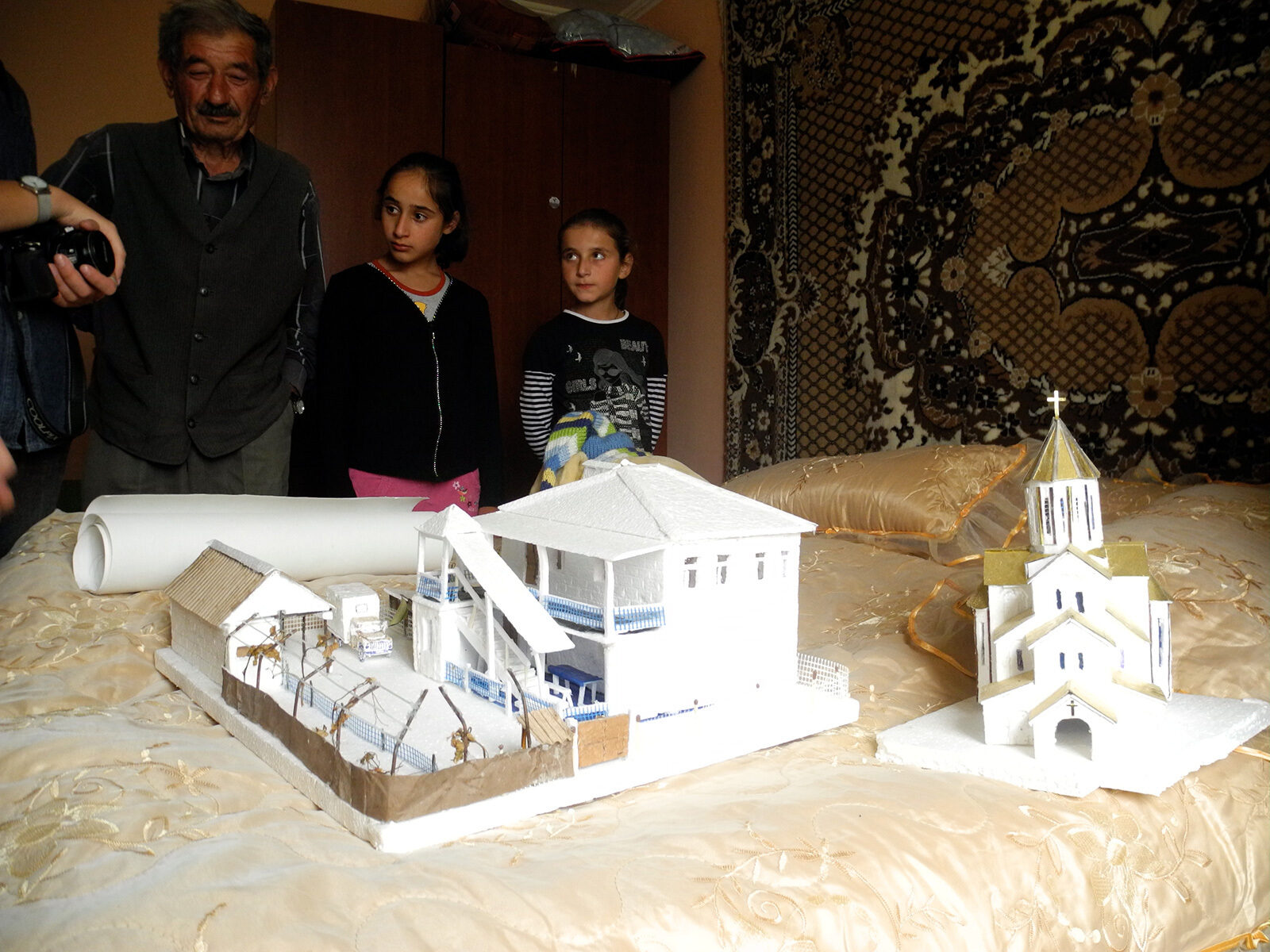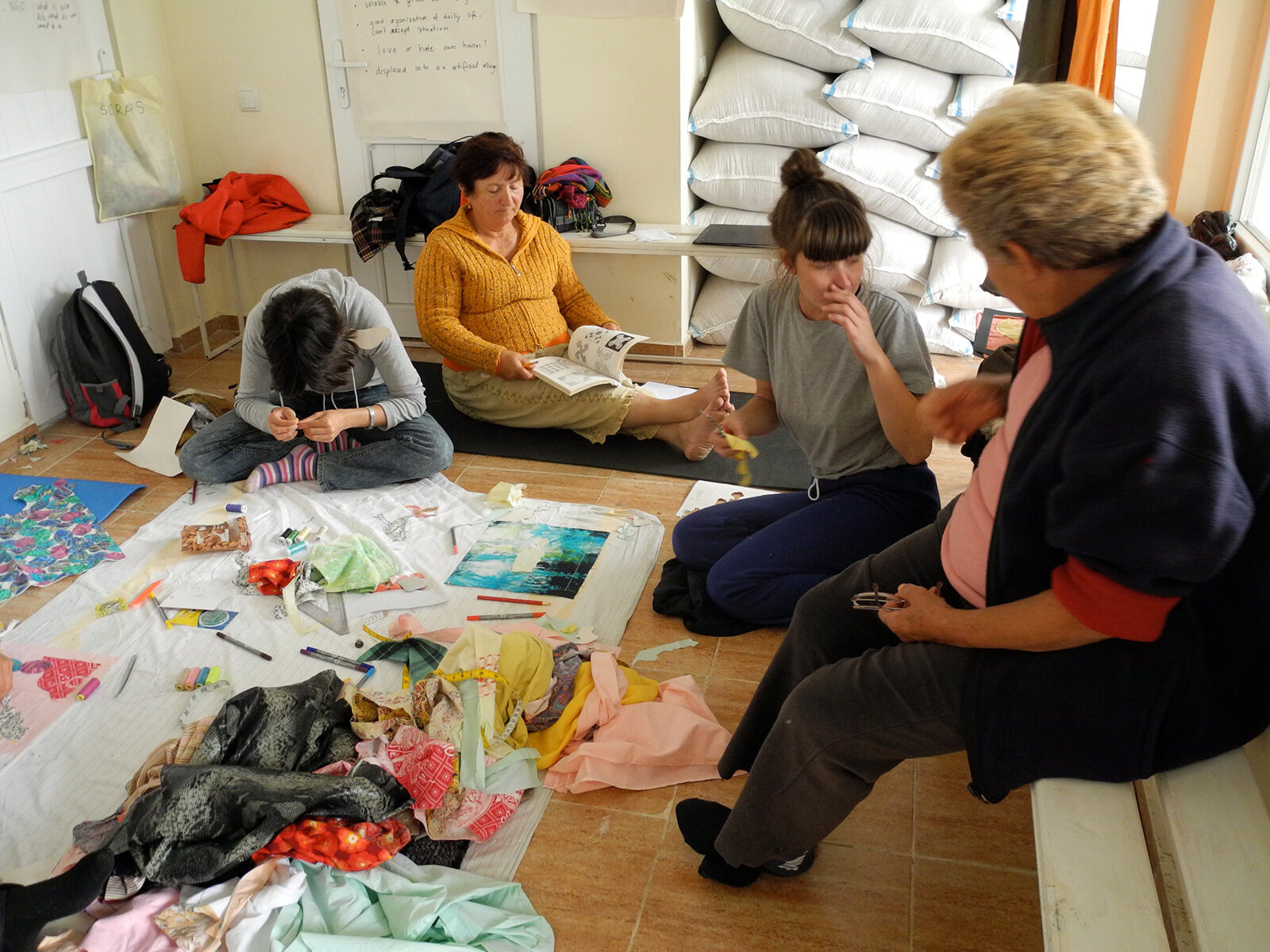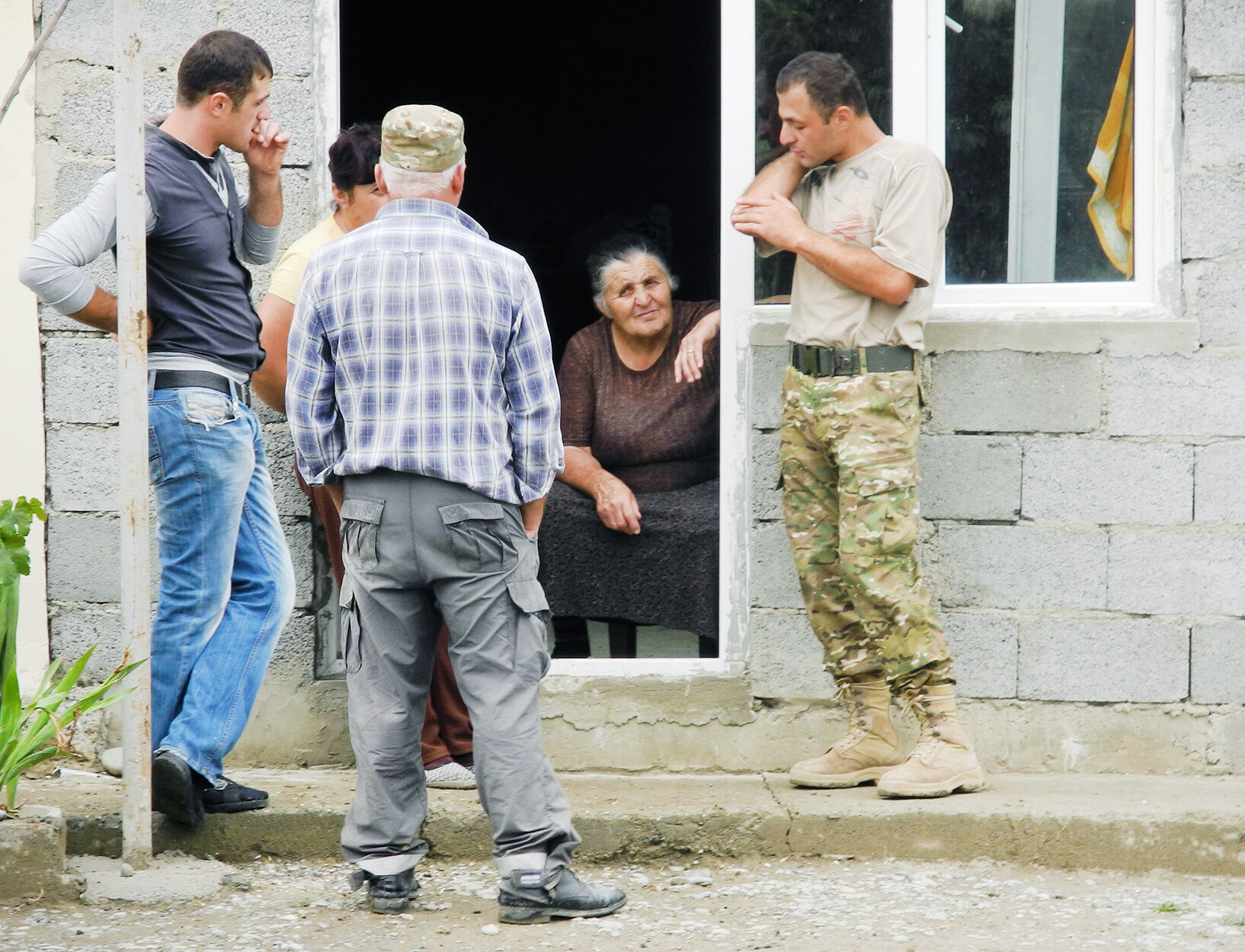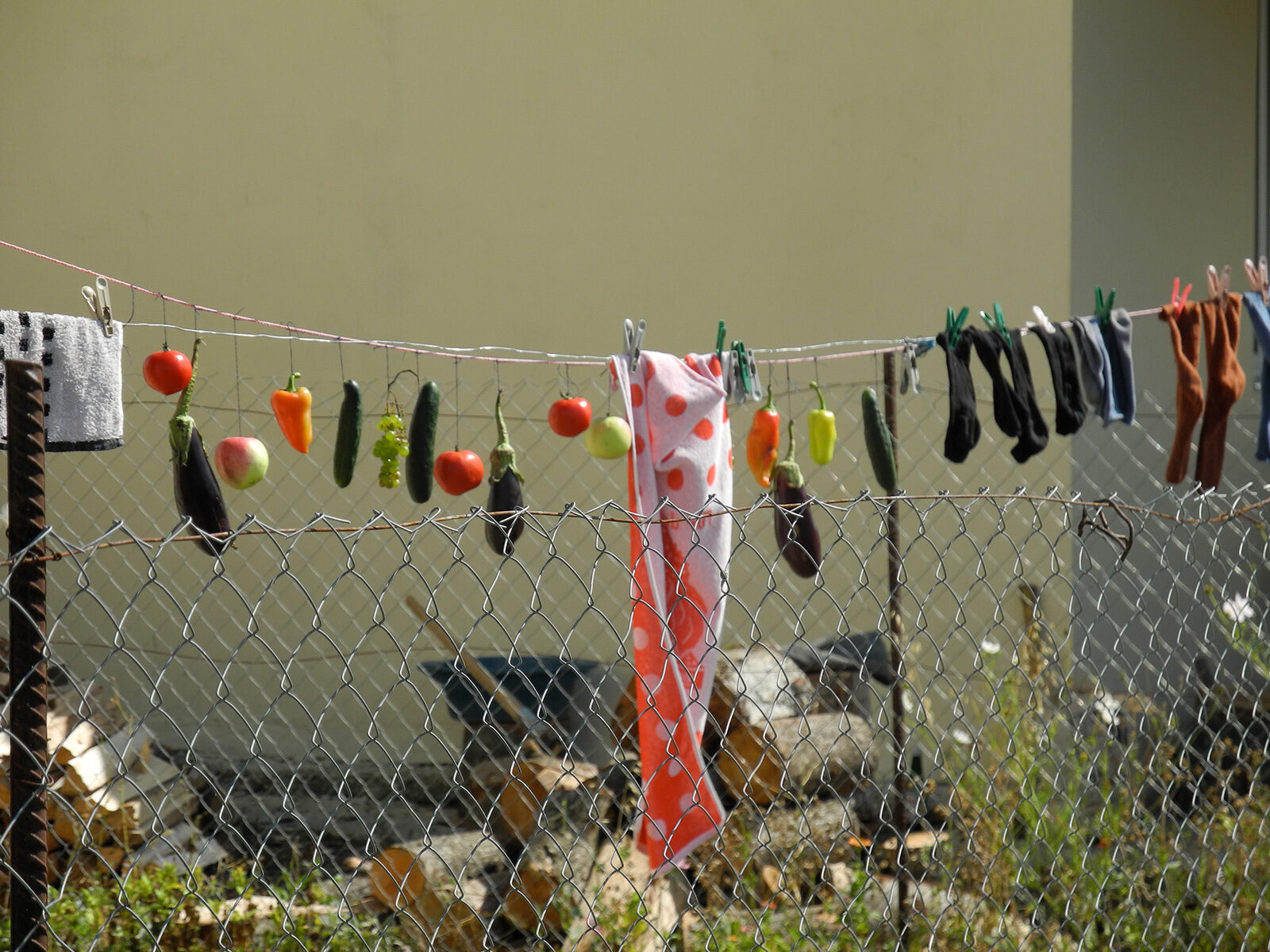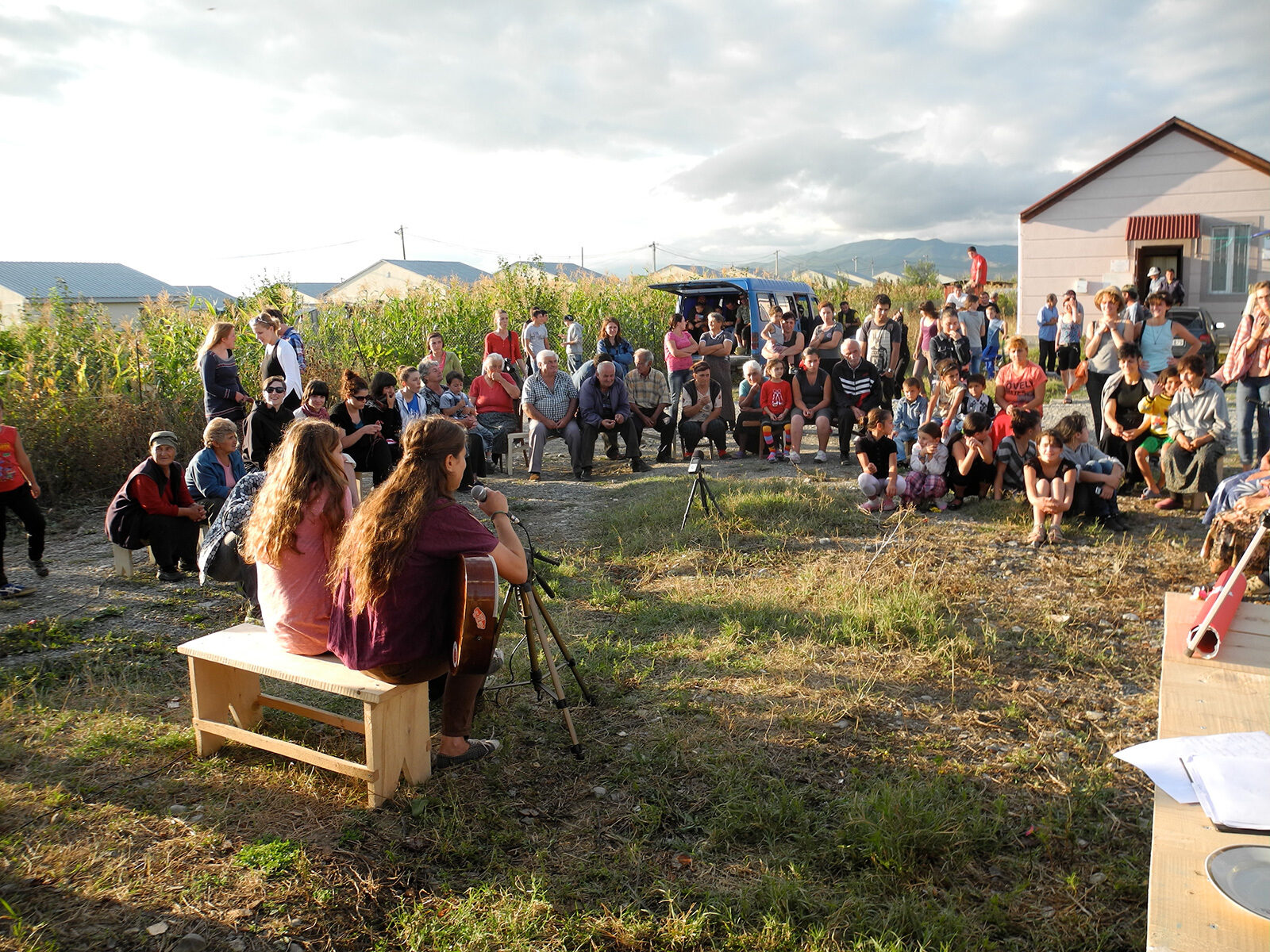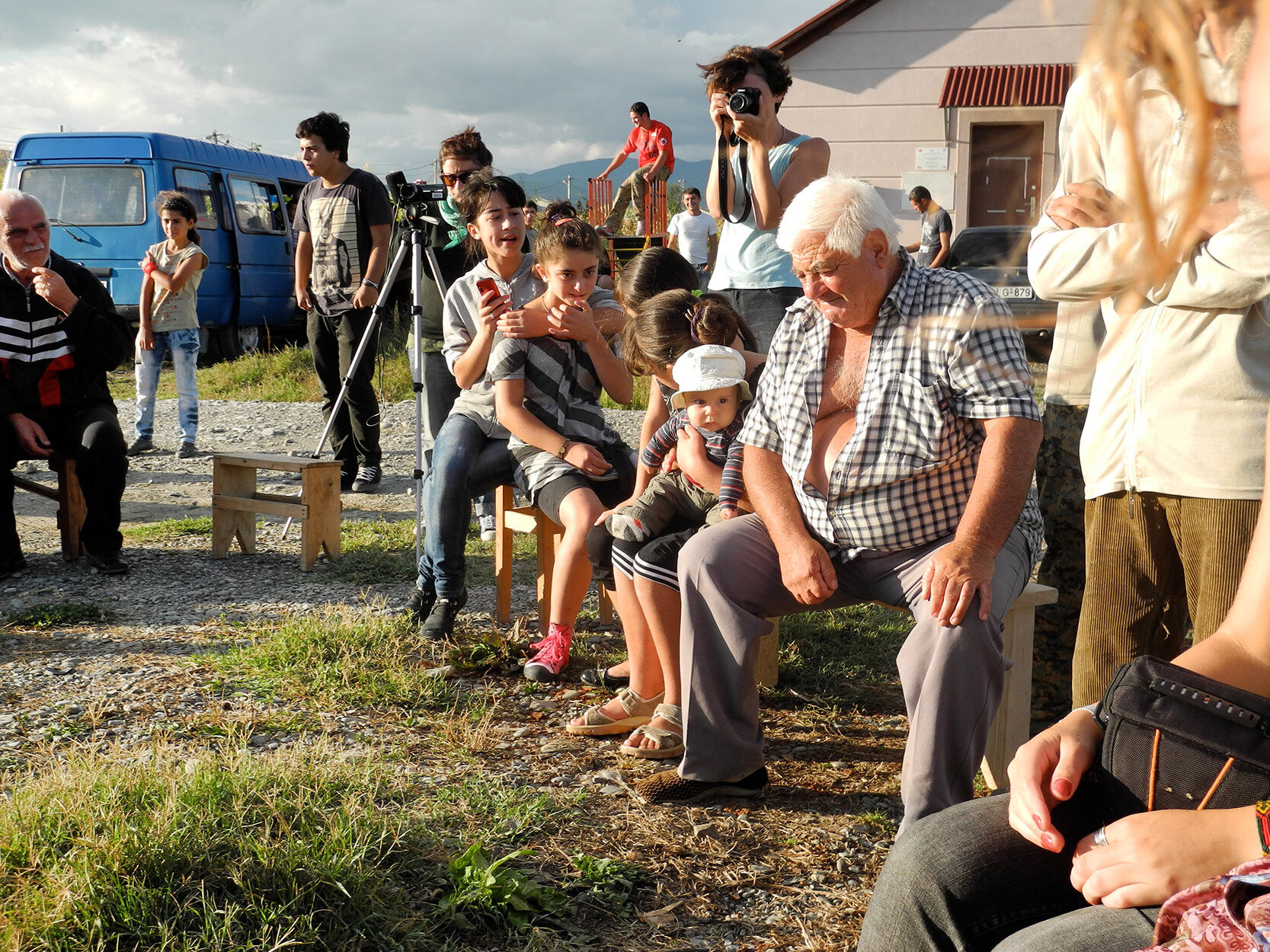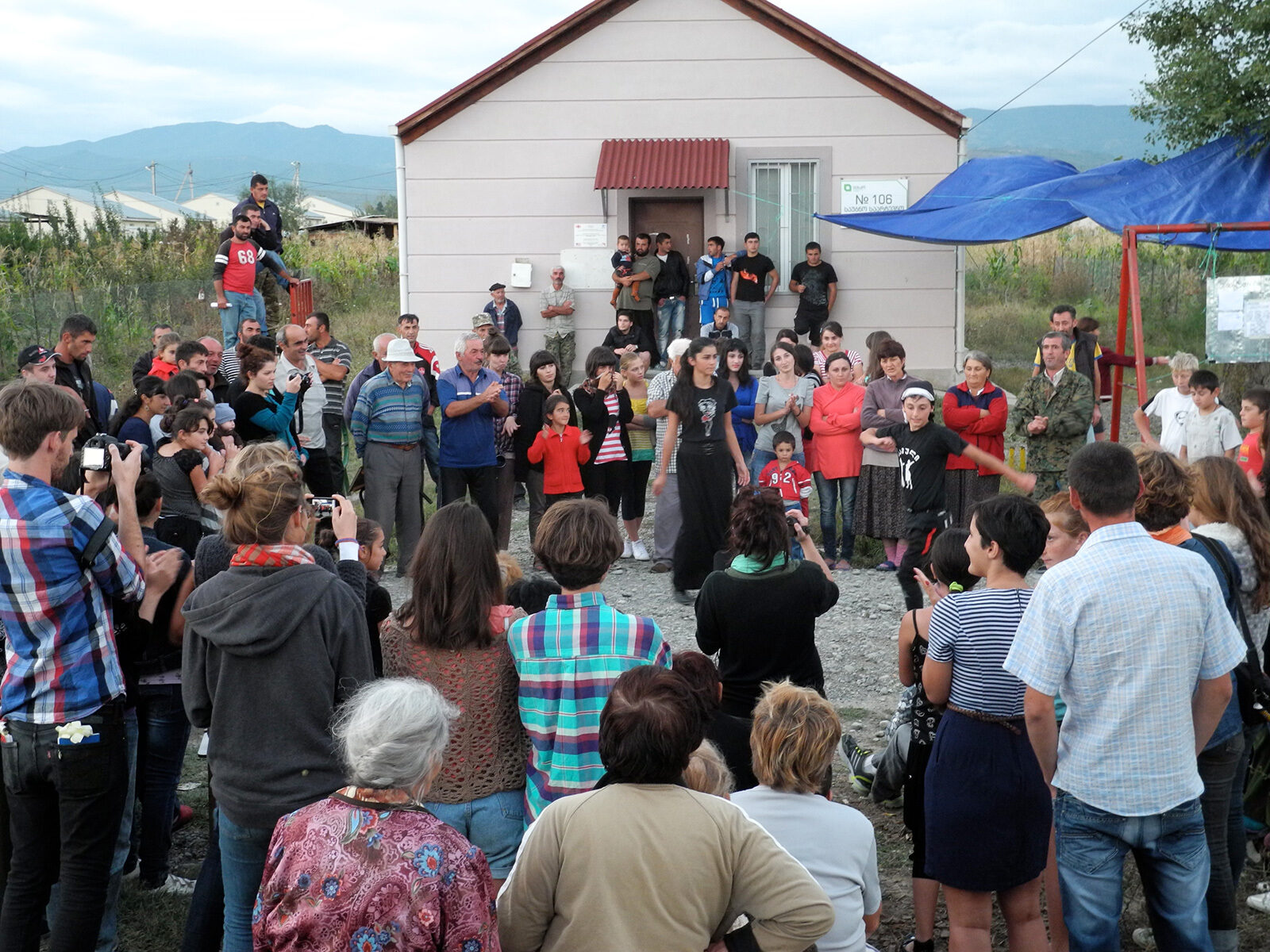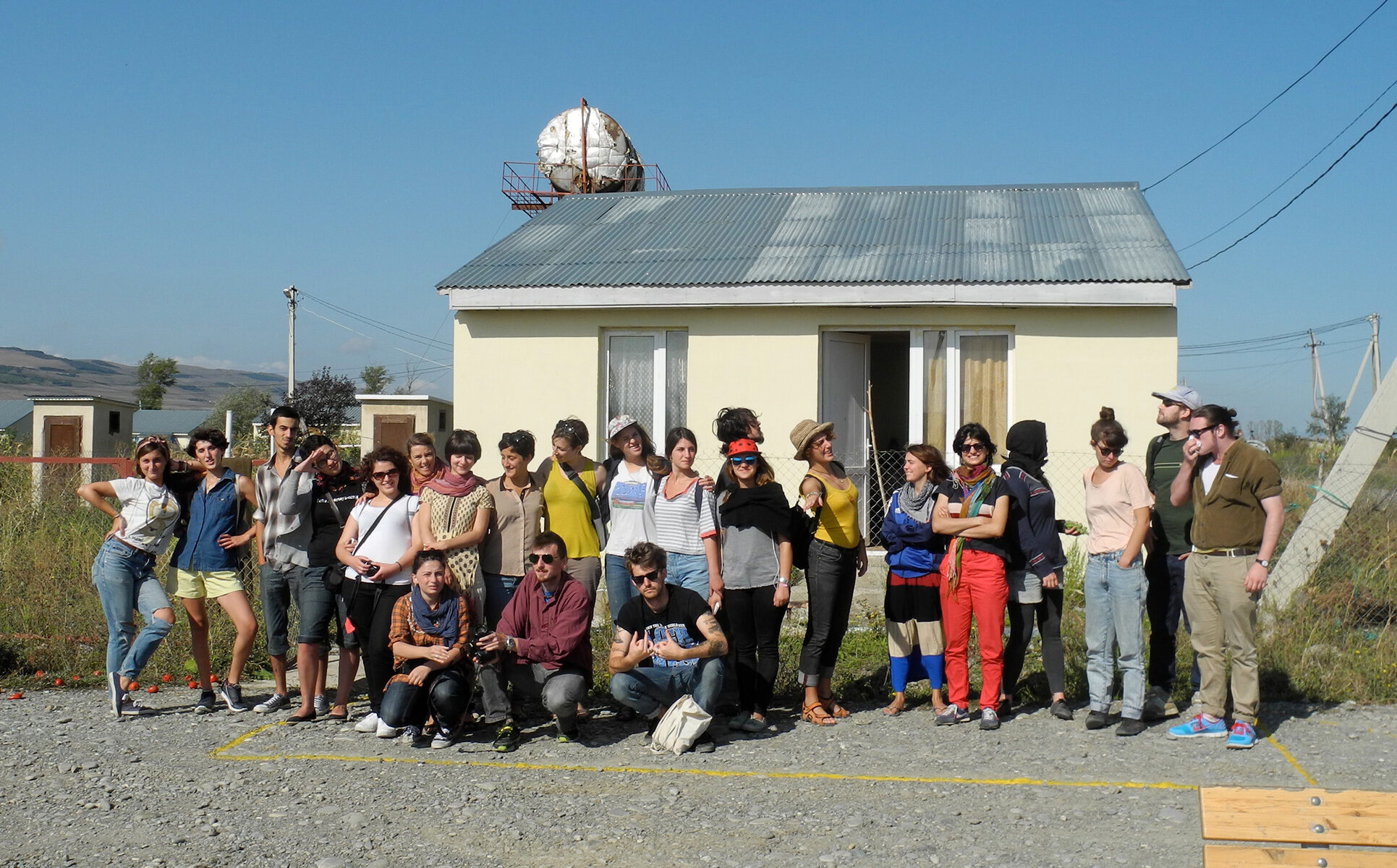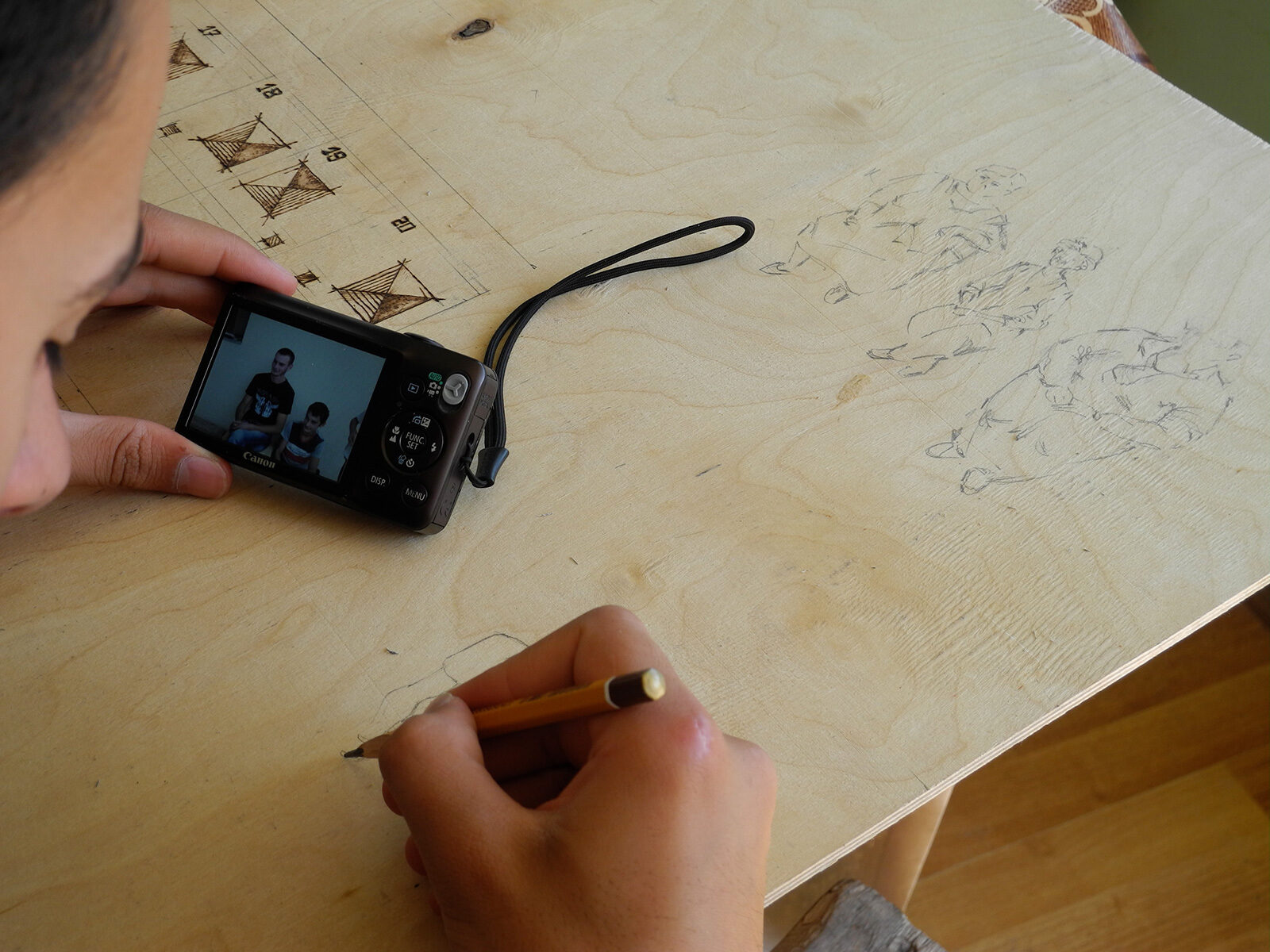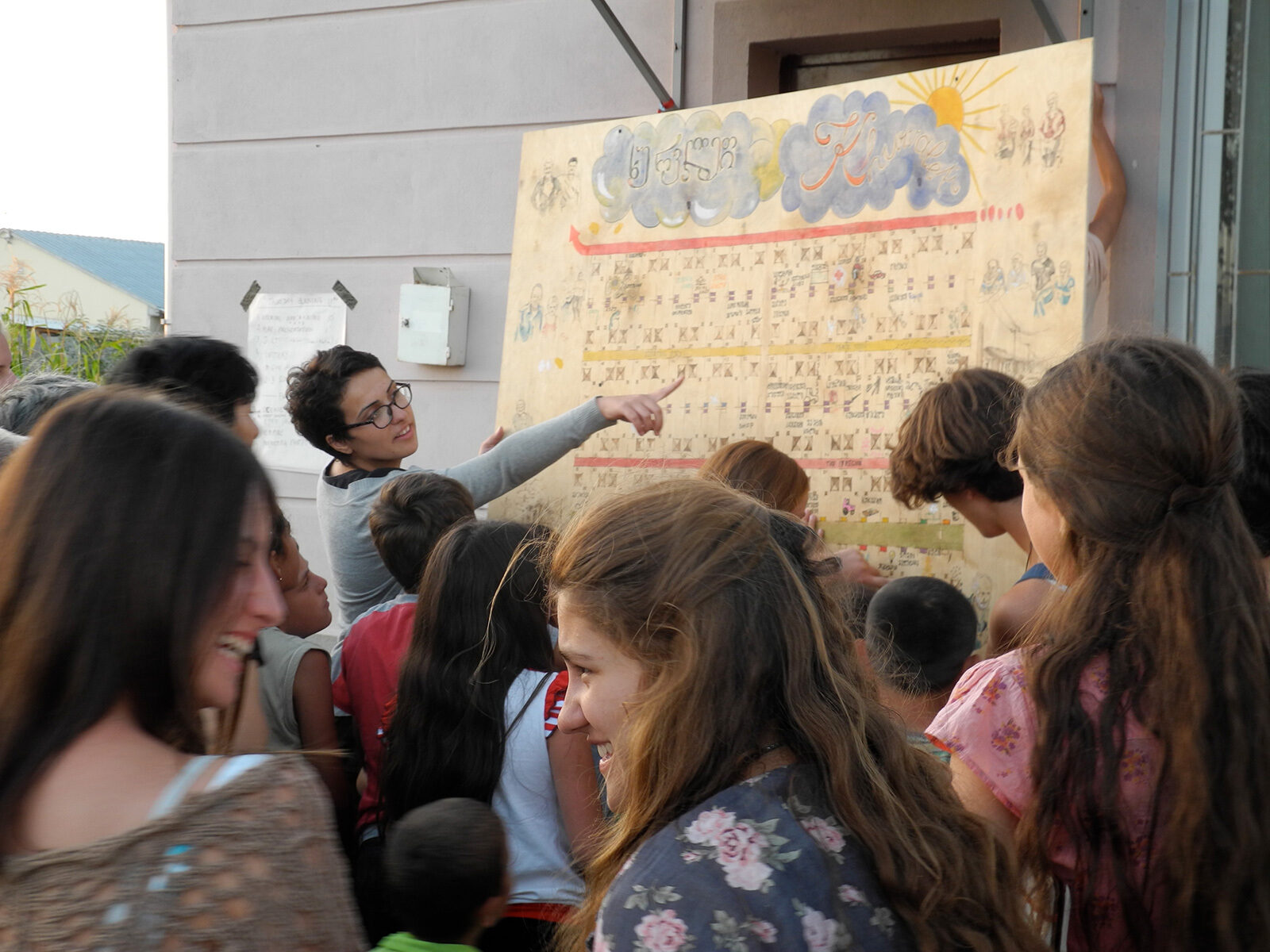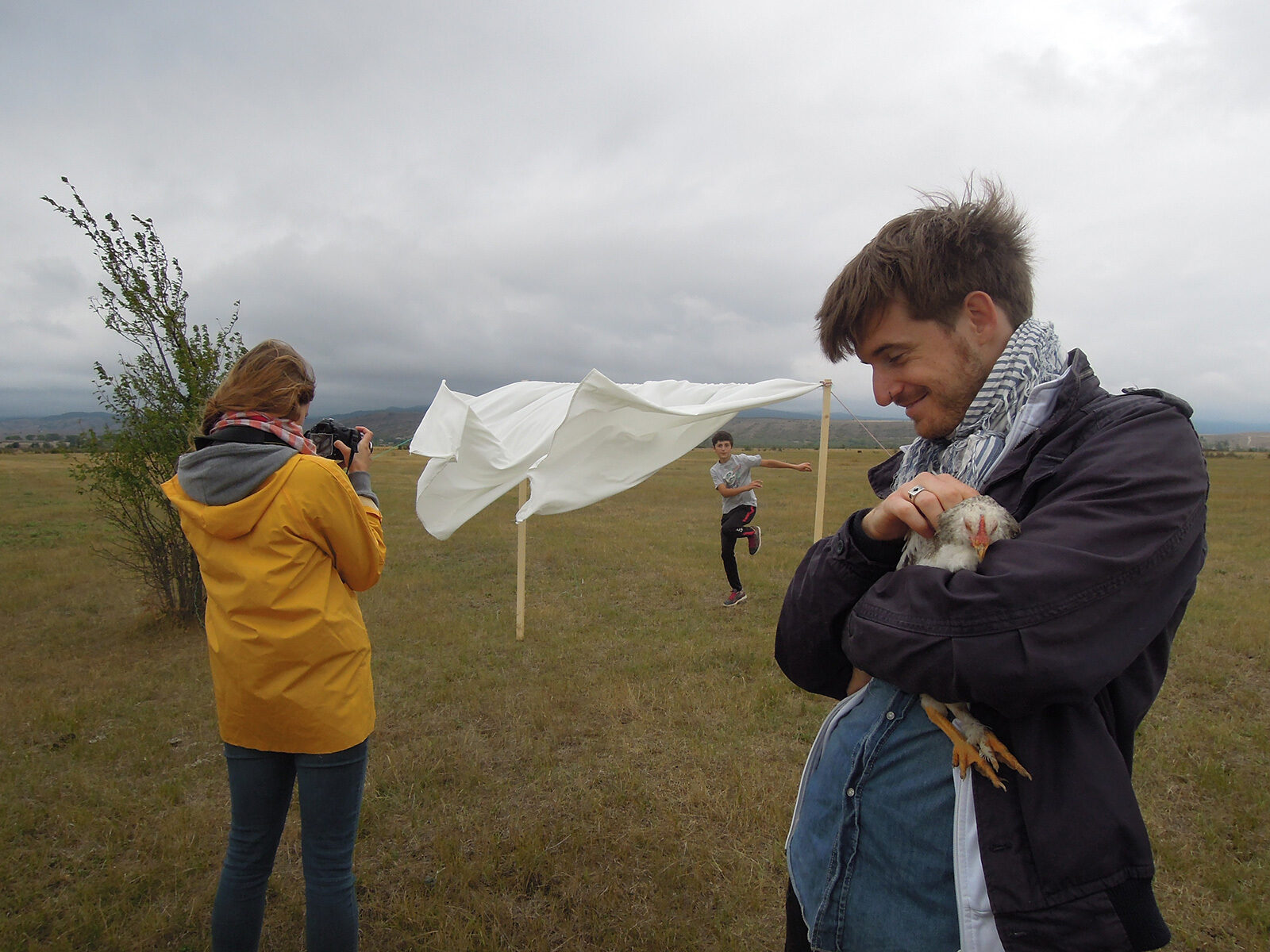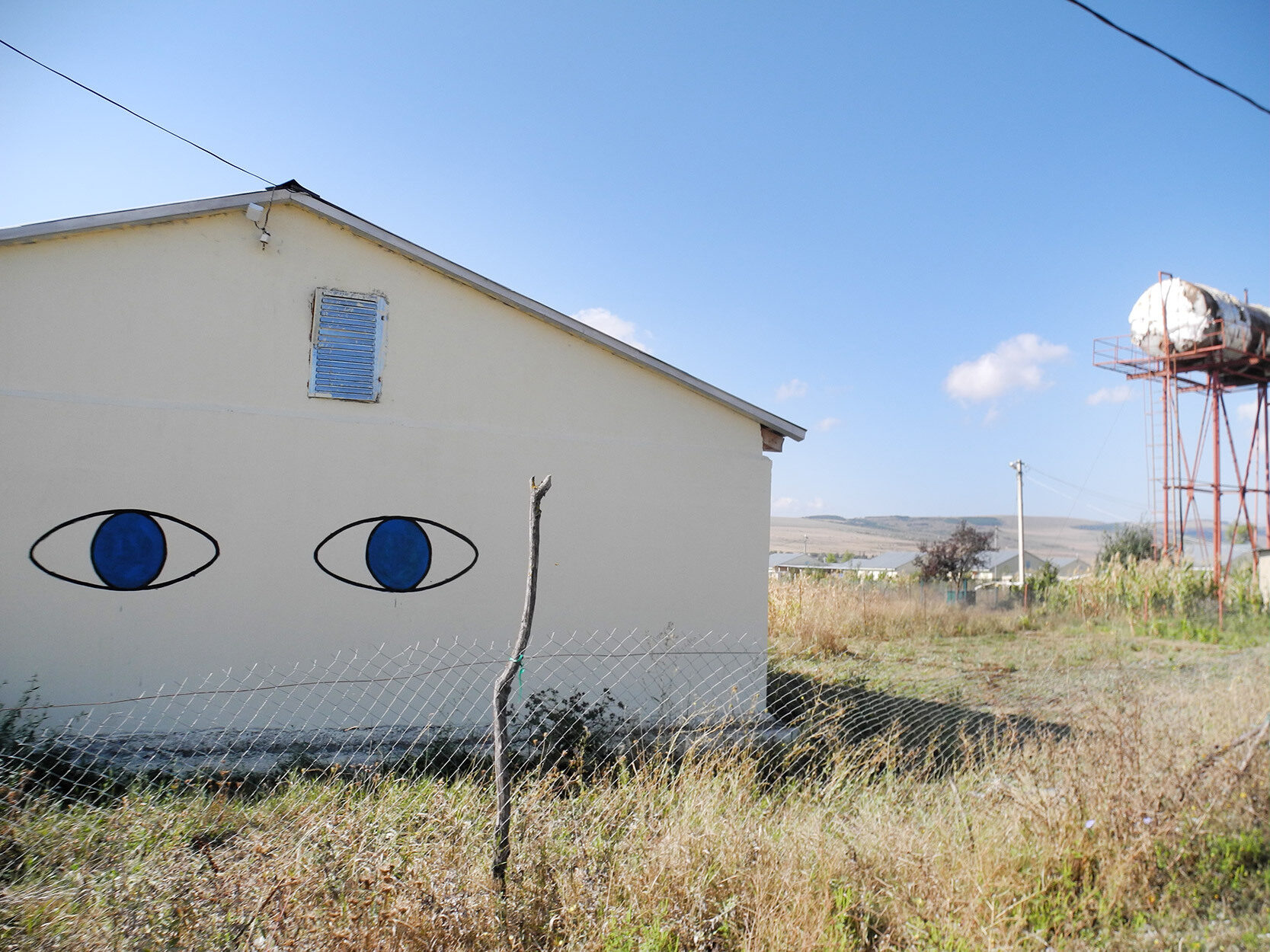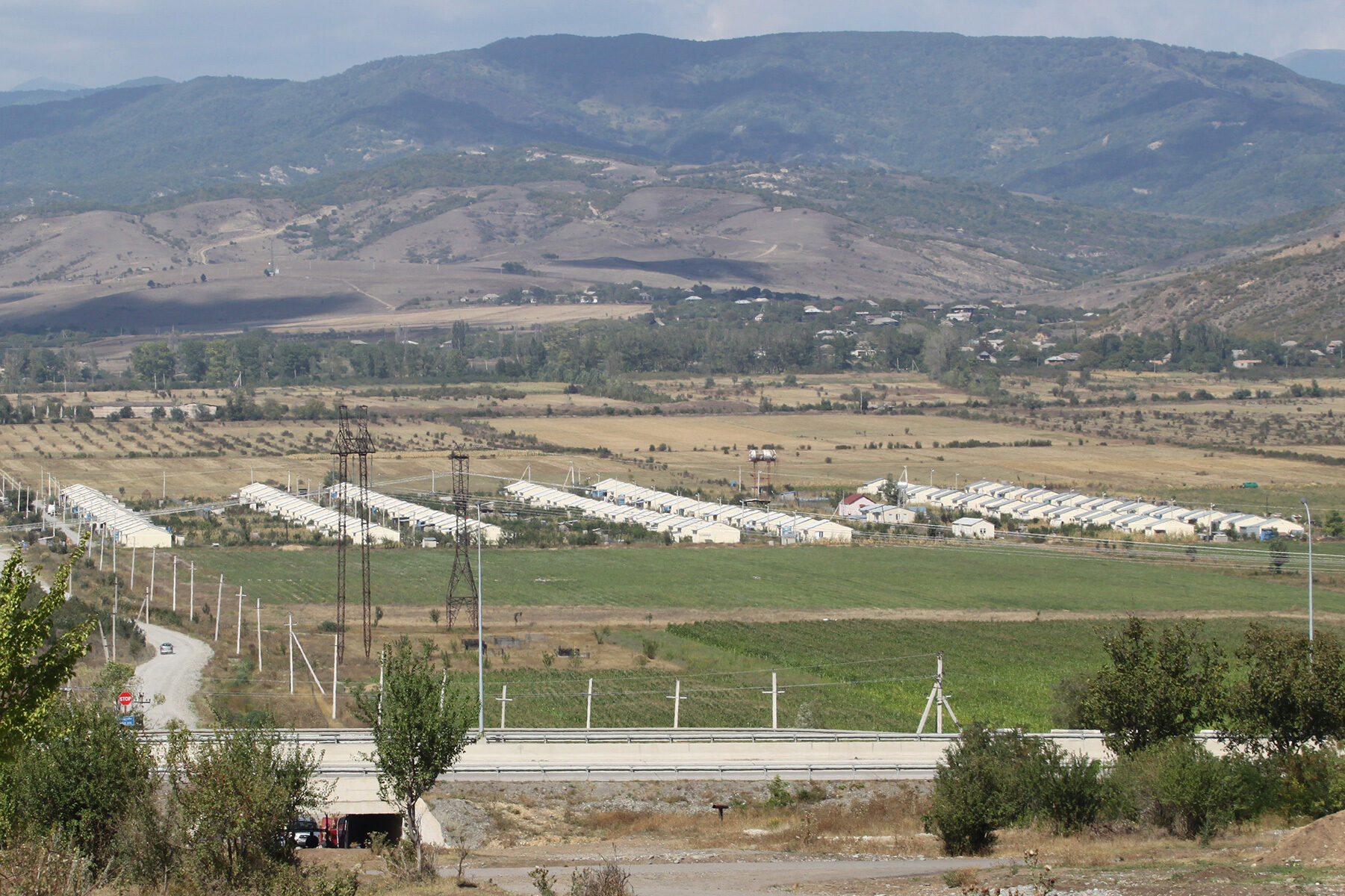Art Camp
The Art Camp projects initiated and organised by artasfoundation are work stays for students of the Tbilisi State Academy of Arts and the Zurich University of the Arts (ZHdK) in war-affected villages and settlements for war-displaced peoople in the Shida Kartli region of Georgia.
Long-lasting tensions in this region on the south side of the Caucasus Mountains led to a war in 2008 and the de facto separation of South Ossetia¹ from Georgia. Many people of Ossetian or Georgian origin were expelled from their homes and villages. On the Georgian side of the fenced line, that is called ‘administrative boundary line’ (ABL) in Georgia, still about 20,000 Displaced Persons live today. Some of them are staying with relatives and in private homes, many in Tbilisi. In contrast, around 12,000 people are still living in 38 different, makeshift settlements near the ABL. These consist of 60 to 2,000 small prefabricated houses built by the Georgian state or international donors. Khurvaleti and Shavshvebi, the sites of the first two Art Camps (2012 and 2014), are such settlements.
In the current political situation there are no signs of an early return for those who have been displaced. They receive a small monthly subsidy from the Georgian state and live from the yield of the small garden plots around each house. Their mobility is low and unemployment is higher than the already serious unemployment in the country as a whole.
The third Art Camp took place in 2015 in the same collaboration between art students from Georgia and Switzerland in the village of Zemo Nikozi, a former suburb of the city of Tskinvali, which had also been badly hit by the war.
Art Camp 2015
In 2015 the Art Camp continued in its third edition in the village of Zemo Nikozi. The village lies directly on the fenced line that separates South Ossetia¹ from Georgian controlled land since the war in 2008. Today the village is known for a particularly great destruction in this war, but before it had been known all over Georgia for its apple production.
Twelve students of the Zurich University of the Arts travelled to Georgia from 27. September to 11. October 2015, and met a group of twelve artists from Tbilisi. Together they travelled to Zemo Nikozi. There they stayed with different families and started working in mixed Georgian-Swiss groups on art projects about the local situation. In the artistic works, which were often the result of discussions with the villagers, preference was given to an experimental, process-oriented approach rather than an obligation to produce finished works. Various media and forms of work were used, such as a performance on women’s biographies, audio and film recordings of a folk song, a drawing book on stories from the local medical station and murals in the school building. With a combined effort, an armoured car rusting on a field was transformed into a ship and its sails were ceremonially hoisted. At the end, everything was presented to the host families from Nikozi in a well-attended exhibition in the school building.
What were the aims of this project stay? On the one hand they referred to the place and local population, on the other hand, for the students, to the forms of cooperation. Thus, the aims were (1) creating opportunities for respectful encounters and mutual exchange between the visiting students and the local hosts; (2) bringing variety or enhancement of everyday life to the residents, perhaps even providing support through the interest of people ‘from so far away’; (3) identifying the central concerns of the village population through art; (4) reflection on the meaning and possibilities of artistic work in a region affected by conflicts, in particular if artistic work does not consider itself as ‘humanitarian aid’; and (5) gaining experience with the collaboration of artists who – at least in part –come from different backgrounds in their understanding and tradition of art.
Place and Year
Shida Kartli, 2015
Students
Mariam Agdgomelashvili, Malkhaz Bejuashvili, August Blum, Leonia Brenner, Céline Brunko, Morena Buser, Torkine Gabedava, Mariam Gurgenidze, Giorgi Kopadze, Dato Koroshinadze, Mirian Labadze, Enri Lamazoshvili, Basil Meister, Jessica Rensch, Suzanne Richard, Inga Salvashvili, Tsira Sanaia, Torkine Sanodze, Milena Sentobe, Levan Shvelidze, Valentina Triet, Zura Tsopurashvili, Lucas Ziegler
Lecturers
Franziska Koch (ZHdK)
Dagmar Reichert (ZHdK, artasfoundation)
Ilia Zautashvili (Tbilisi State Academy of Arts)
Local Coordination
Marika Mgrebishvili
Partner Organisations
Society Biliki, Gori
Tbilisi State Academy of Arts
Zurich University of the Arts (ZHdK)
Financial Contribution
Swiss Agency for Development and Cooperation for South Caucasus (SDC)
Art Camp 2014
Art Camp – a work stay of students from the Tbilisi State Academy of Arts and the Zurich University of the Arts (ZHdK) in a provisional settlement for war-displaced people from South Ossetia in Shida Kartli – took place in the beginning of March 2014. It continued the project from 2013 with new participants in a neighbouring settlement. This time the group travelled to the settlement Shavshvebi near the city of Gori. For two weeks the students and lecturers lived in the small houses that were originally built there for the families that had been displaced. Since some of them were empty, they could be rented.
In Georgian-Swiss groups, the participants developed artistic interventions that focused on encounters with the residents of the settlement. For the Swiss-, but even for the Georgian students much was new. Conversely, the people of Shavshvebi could experience through the artistic works how their place of refuge appeared from the external viewpoint of Georgian and Swiss students. Conversations were encouraged and a lively exchange occurred with the young people from the camp, when the cold and windy weather brought everyone together in the makeshift heated common room, or during two evening film and singing events. These were carried out together with the residents of the settlement in the central building and both ended with an overcrowded disco – and the break-down of the sound amplification system that the project group had brought along.
Place and Year
Shida Kartli, 2014
Students
Brigham Baker, Fiona Bobo, Tsitsi Bodokia, Svetlana Bürki, Mariam Chekurishvili, Yannis Christ, Tobias Dimmler, Mariam Djadjaia, Tamta Djakhua, Gaioz Djincharadze, Nino Djokhadze, Nino Esaiashvili Cathrin Jarema, Lika Koinashvili Aleksandre Kvirikadze, Davit Nargizishvili, Elena Obgaidze, Jessica Rensch, Evan Ruetsch, Basil Schubert, Mariam Sulakvelidze, Tharaneh Wanner, Ucha Zgudadze.
Lecturers
Franziska Koch (ZHdK)
Dagmar Reichert (ZHdK, artasfoundation)
Tina Tskhadadze (Tbilisi State Academy of Arts)
Ilia Zautashvili (Tbilisi State Academy of Arts)
Local Coordination
Marika Mgrebishvili, Gori
Galina Okropiridze, Shavshvebi
Partner Organisations
Society Biliki, Gori
Tbilisi State Academy of Arts
Zurich University of the Arts (ZHdK)
Art Camp 2012
At the end of August 2012, twelve students from the Tbilisi State Academy of Arts and twelve students from the Zurich University of the Arts (ZHdK) met and travelled to Khurvaleti, a settlement for war-displaced families, 16 km from the Georgian city of Gori. They lived in this settlement for ten days and jointly developed various artistic works.
artasfoundation established the previous contact with the inhabitants of the settlement and the nearby village of Khurvaleti through the NGO Biliki from Gori, who also accompanied the implementation of the project logistically.
The art students from Tbilisi and Zurich worked together in small groups and realised art projects based on research and discussions with the inhabitants of Nikozi: a music, singing and dance evening with all the residents; a plan of the settlement carved in wood on which all the residents were listed by occupation, origin and nickname, with some also being portrayed; markings for a bus stop painted on a gravel path, where a bus would certainly never arrive, so that it became a symbol for waiting. Students and local women joined to sew a tapestry (quilt) that spoke of their memories, dreams and everyday life. Another art project investigated the exact location of the homelands of the displaced families and set their coordinates in relation to a constellation of stars in outer space; for a further project a public meeting space was set up on the central square of the settlement by means of homemade tables and benches; one student group collected performative scenes using a white curtain as a simple stage construction.
The works were supported by art lecturers, who also participated in the ongoing reflection on artistic work in a region affected by war. As the final evaluation, carried out by Biliki and the ZHdK, showed, the project had a strong and positive resonance among both the residents of the settlement and the students. The former valued the variety the visit gave to their every-day life, and the interest of foreigners in their situation. The Georgian and Swiss students gained an in-depth exchange about differing forms of art educational and could challenge their usual attitudes through the encounter with extreme life situations.
Place and Year
Shida Kartli, 2012
Students
Shima Asa, Nanka Bagaturia, Selin Bourquin, Clifford Bruckmann, Tinatin Davadze, Nona Davitaia, Galaktion Ersitavi (group leader), Julia Gehrig, Marekh Gorgiladze, Anna Gzirishvili, Olivia Haggenmacher, Natia Kapanade, Nino Khuroshvili, Niko Kobaidze, Mutsa Metreveli, Thomas Moor, Linda Pfenninger, Sally Schönfeldt, Aleksi Soselia, Paula Tyliszczak, Tim Wandelt, Tamara Widmer, Julia Znoi.
Lecturers
Dagmar Reichert (artasfoundation, ZHdK)
Franziska Koch (ZHdK)
Local Coordination
Marika Mgrebishvili, Gori
Tamara Janashia, Tbilisi
Partner Organisations
Vereinigung Biliki, Gori
Tbilisi State Academy of Arts
Zurich University of the Arts (ZHdK)
Financial Contribution
Swiss Agency for Development and Cooperation in South Caucasus (SDC)
¹artasfoundation would like to underline that its use of names and titles particularly in regards to conflict regions should not be understood as implying any form of recognition or non-recognition by the foundation or as having any other political connotation whatsoever.


